IB exam 2
1/80
There's no tags or description
Looks like no tags are added yet.
Name | Mastery | Learn | Test | Matching | Spaced |
|---|
No study sessions yet.
81 Terms
describe the relationship between the genotype and phenotype of an organism
the genotype (genes) determines the phenotype (physical traits/appearance) of an organism
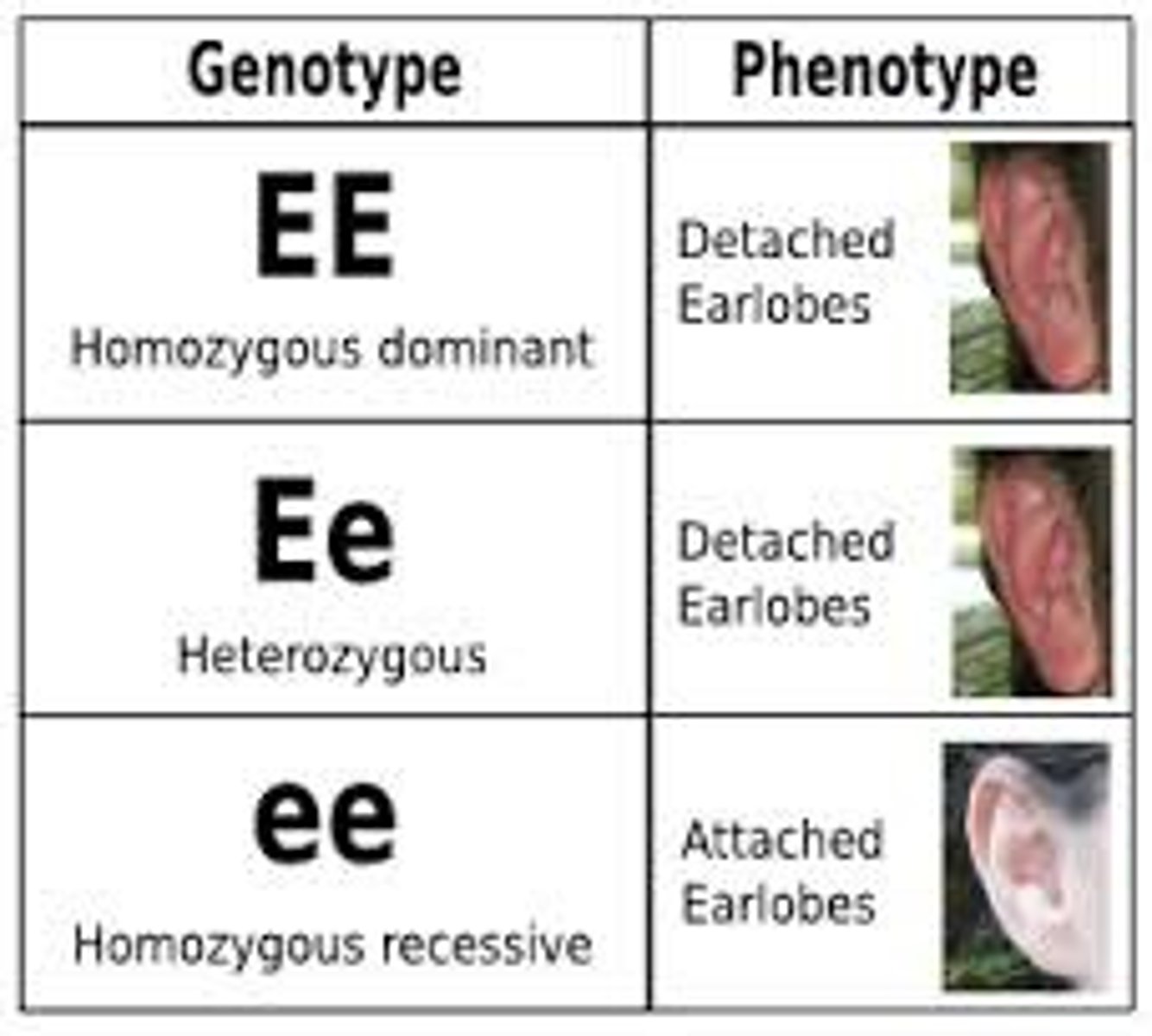
what is one single long and tightly condensed molecule of DNA?
chromosome
in a DNA sample, we find that 34% of the nitrogenous bases in the DNA is made up of Guanine (G). Predict the proportion of nucleotides in the genome contains Adenine (A).
16%
explain how a cell can make a macromolecule such as a lipid from its glycerine and fatty acid subcomponents using the information that is stored in genes along a stretch of a DNA molecule.
the DNA in cells codes for proteins. certain patterns of protein encode for certain molecules and appearances, which can produce molecules like lipids
what is the central dogma of biology?
DNA -> RNA -> protein
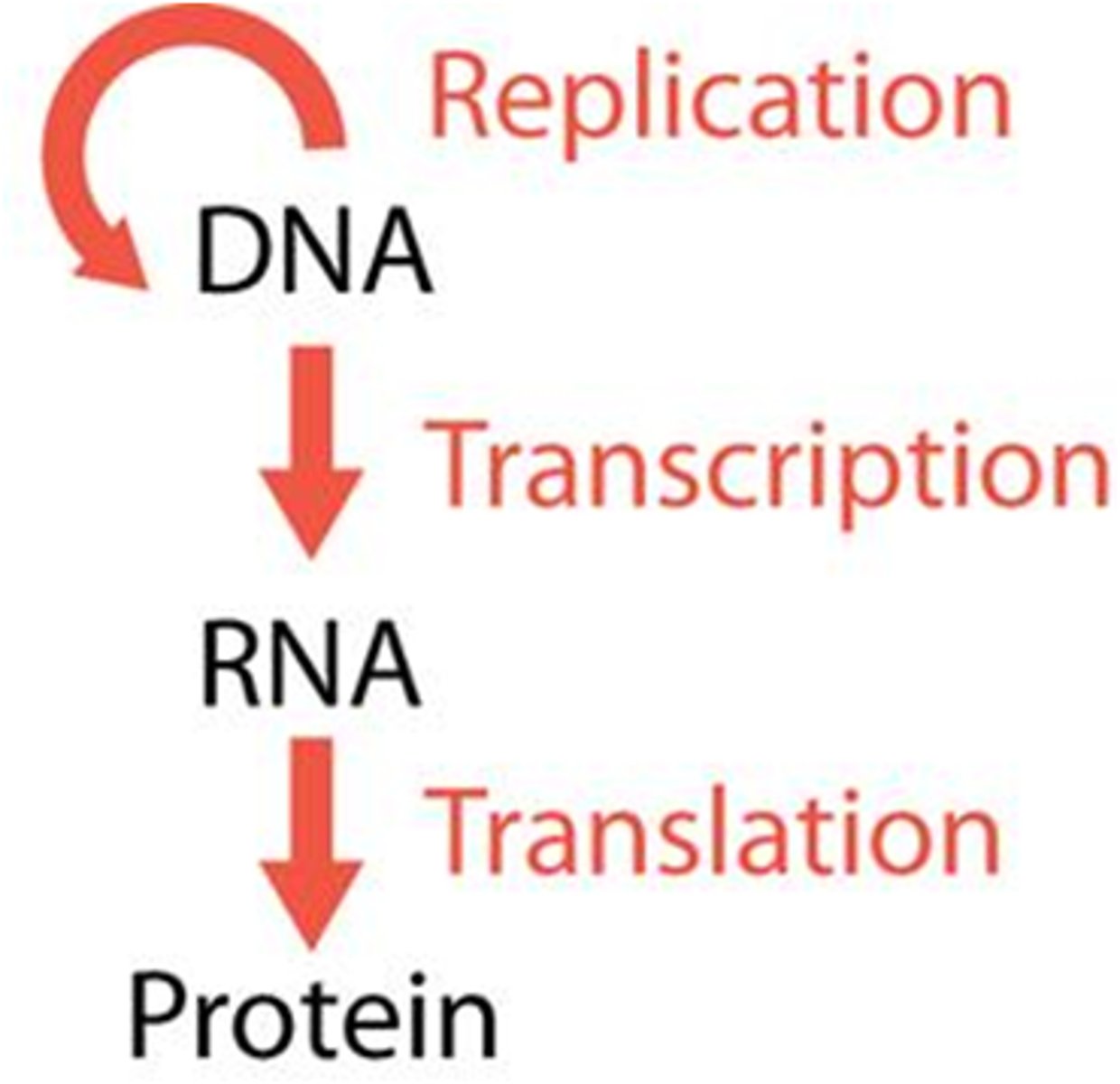
what is a gene?
a gene is a stretch of DNA that codes for a protein
which strand of DNA gets transcribed into mRNA?
the transcribed strand
types of cause mutations
substitution
insertion/deletion (indel)
types of effect mutations
silent
missense
nonsense
frameshift
substitution
one base is substituted for another
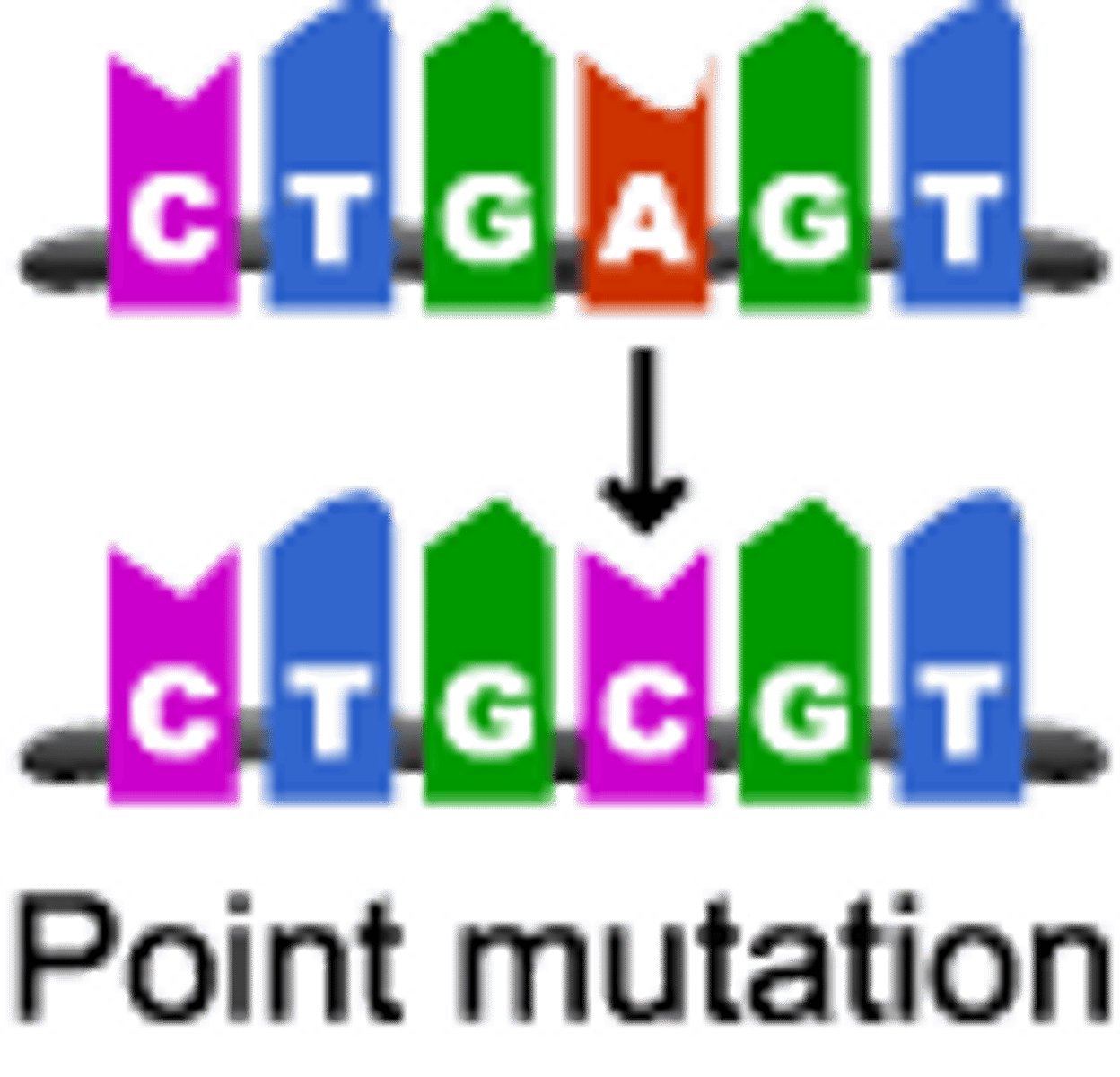
insertion
addition of one or more nucleotide pairs
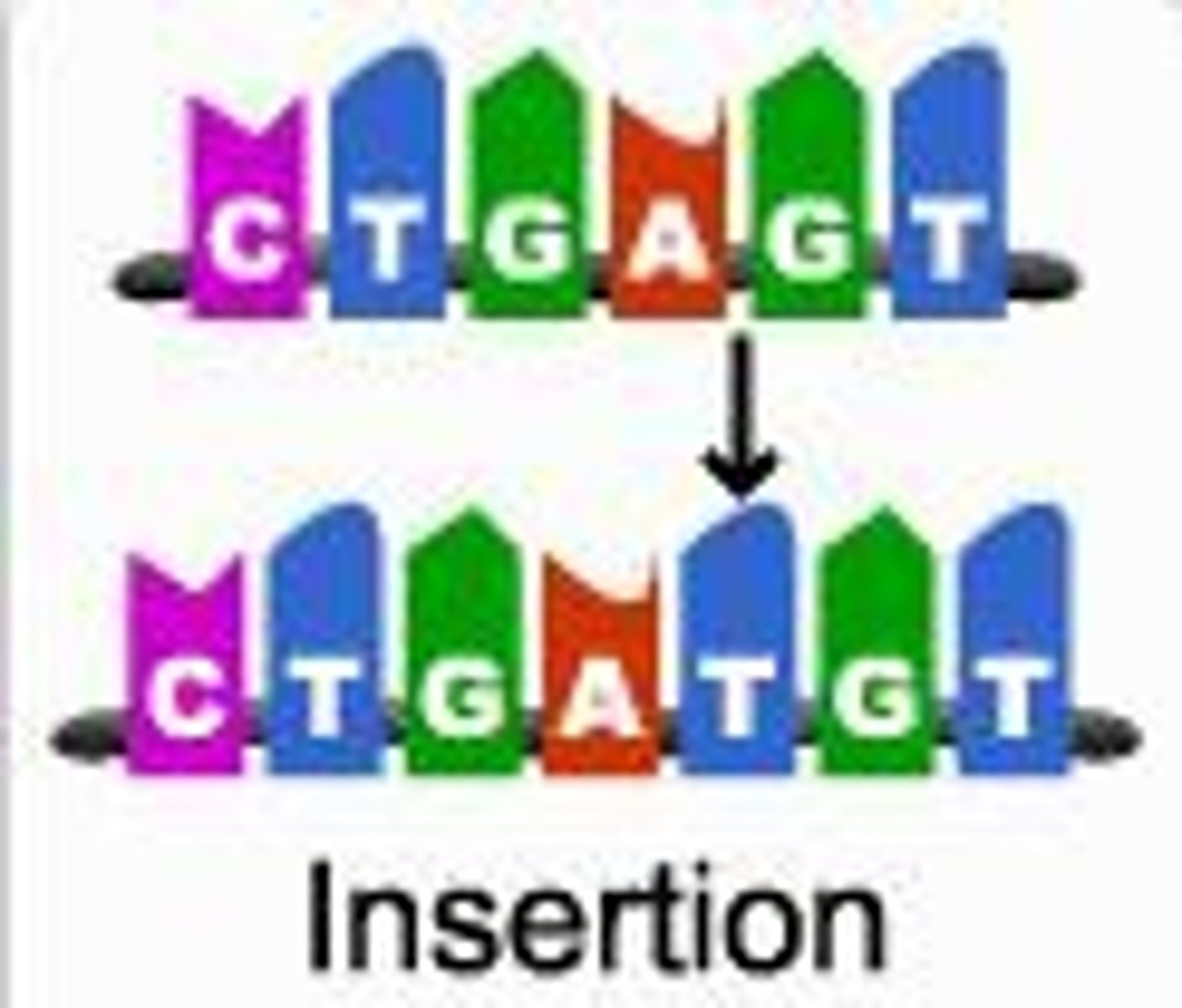
deletion
a fragment of the chromosome is removed
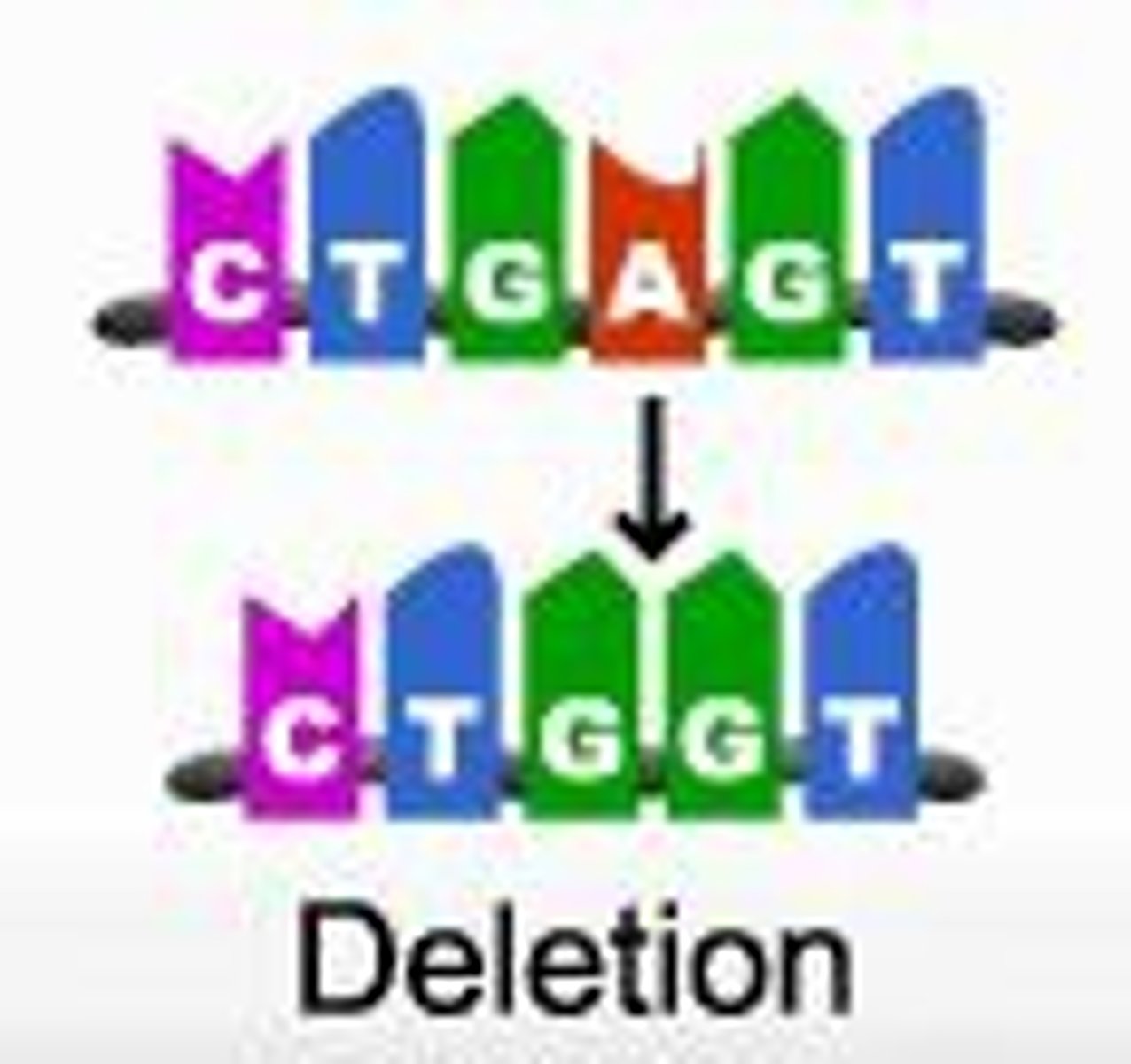
silent mutation
a mutation that changes a single nucleotide, but does not change the amino acid created
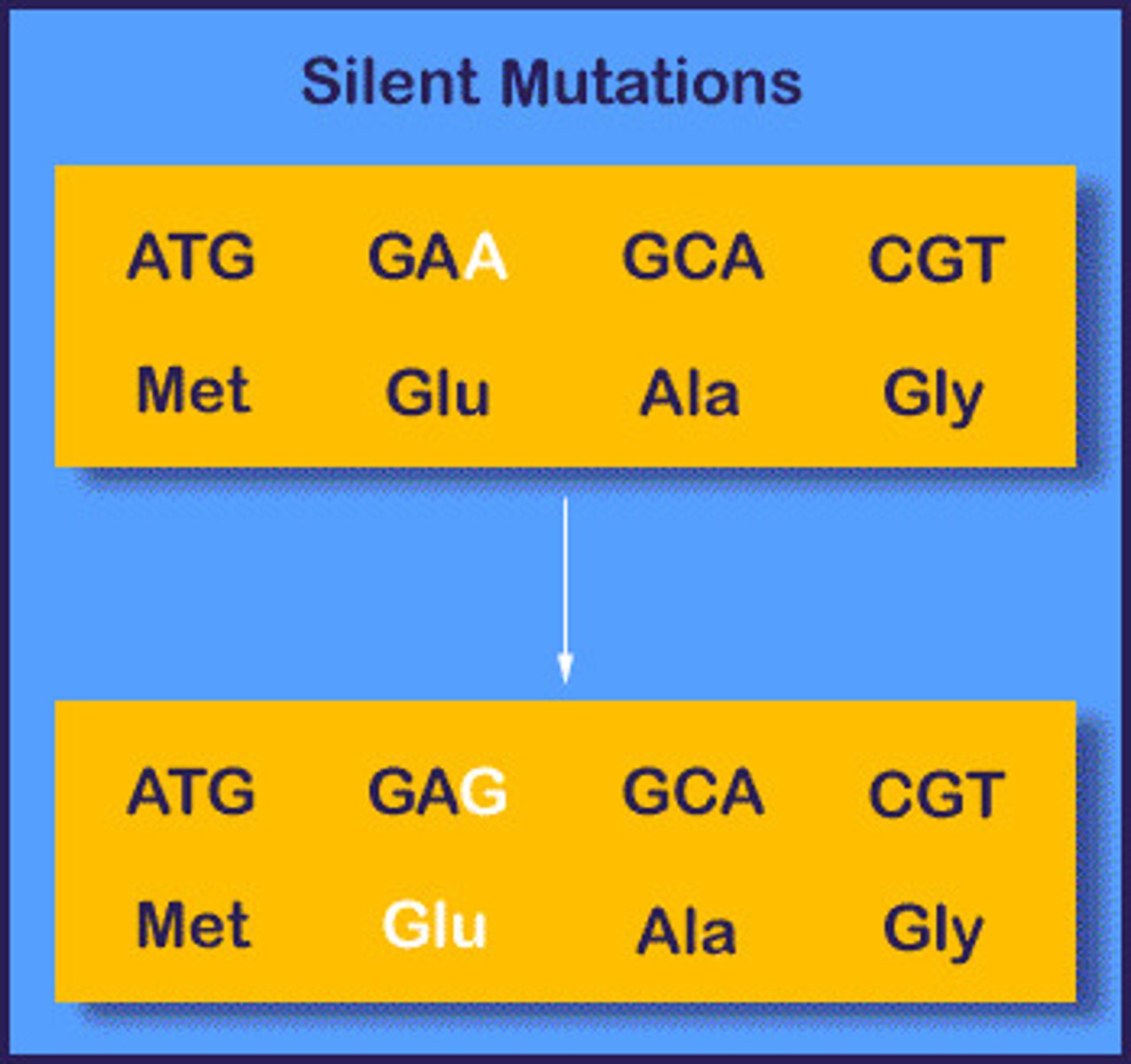
missense mutation
a nucleotide-pair substitution that results in a codon that codes for a different amino acid
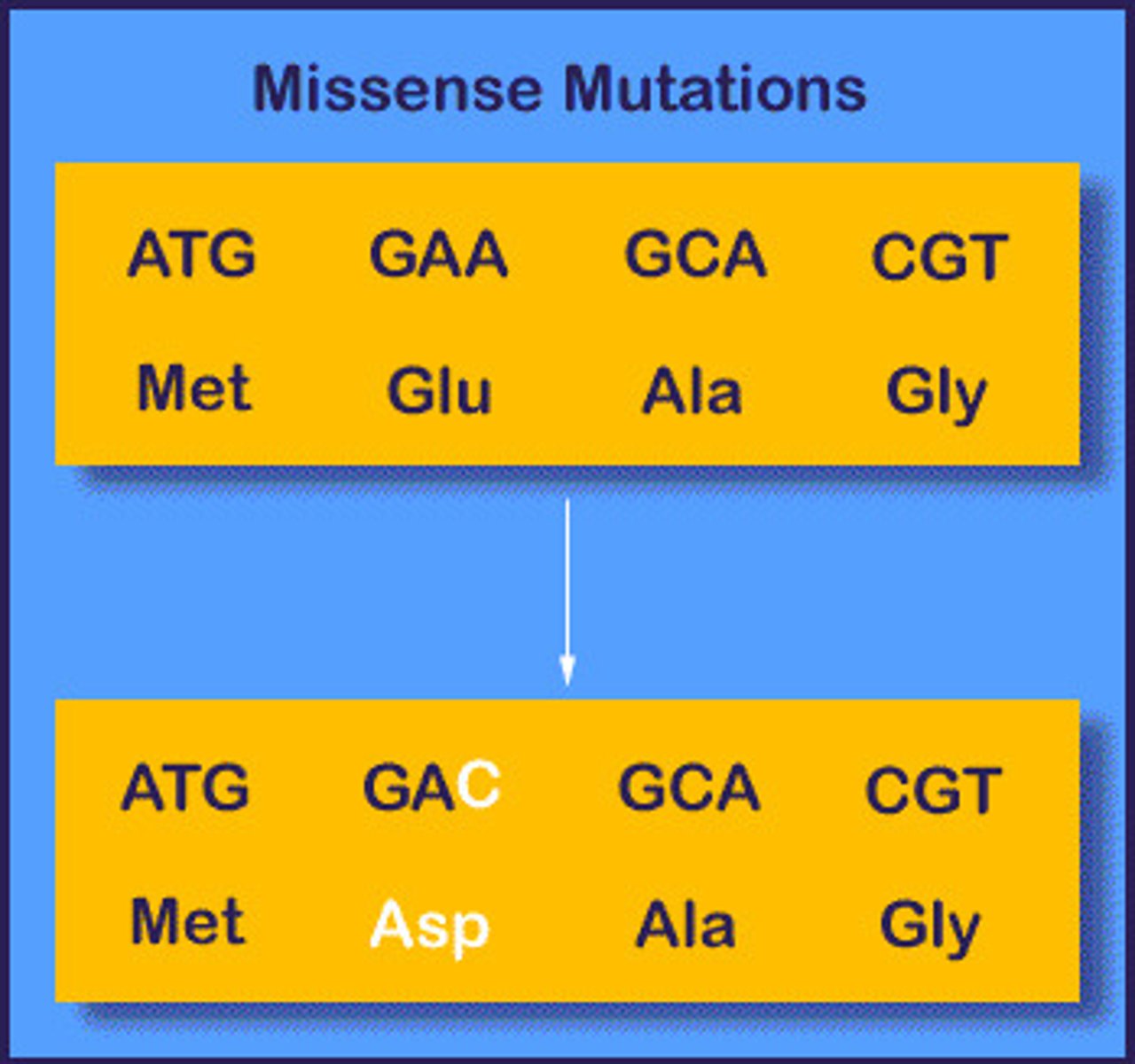
nonsense mutation
a mutation that changes an amino acid codon to a stop codon
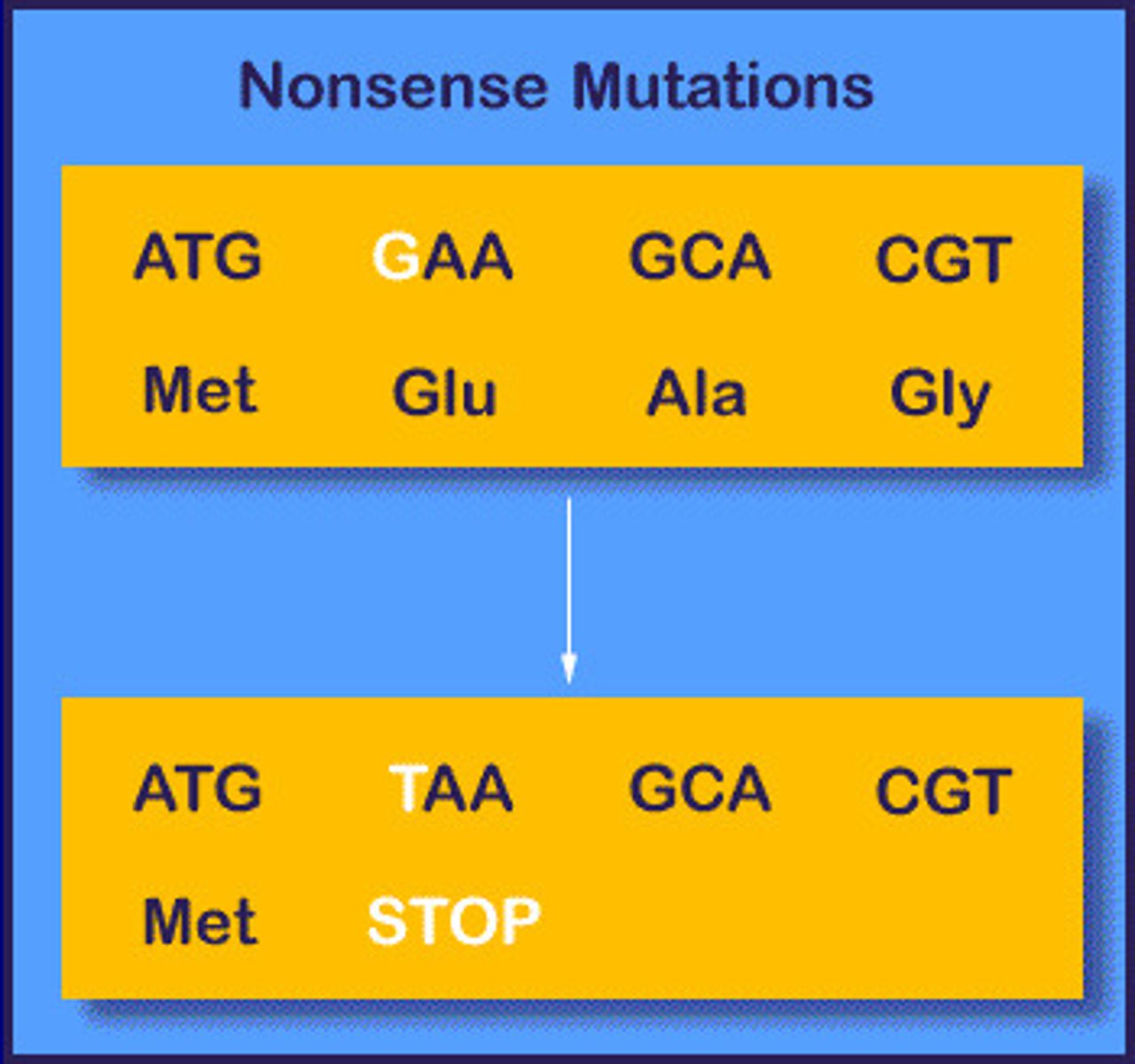
frameshift mutation
mutation that shifts the "reading" frame of the genetic message by inserting or deleting a nucleotide
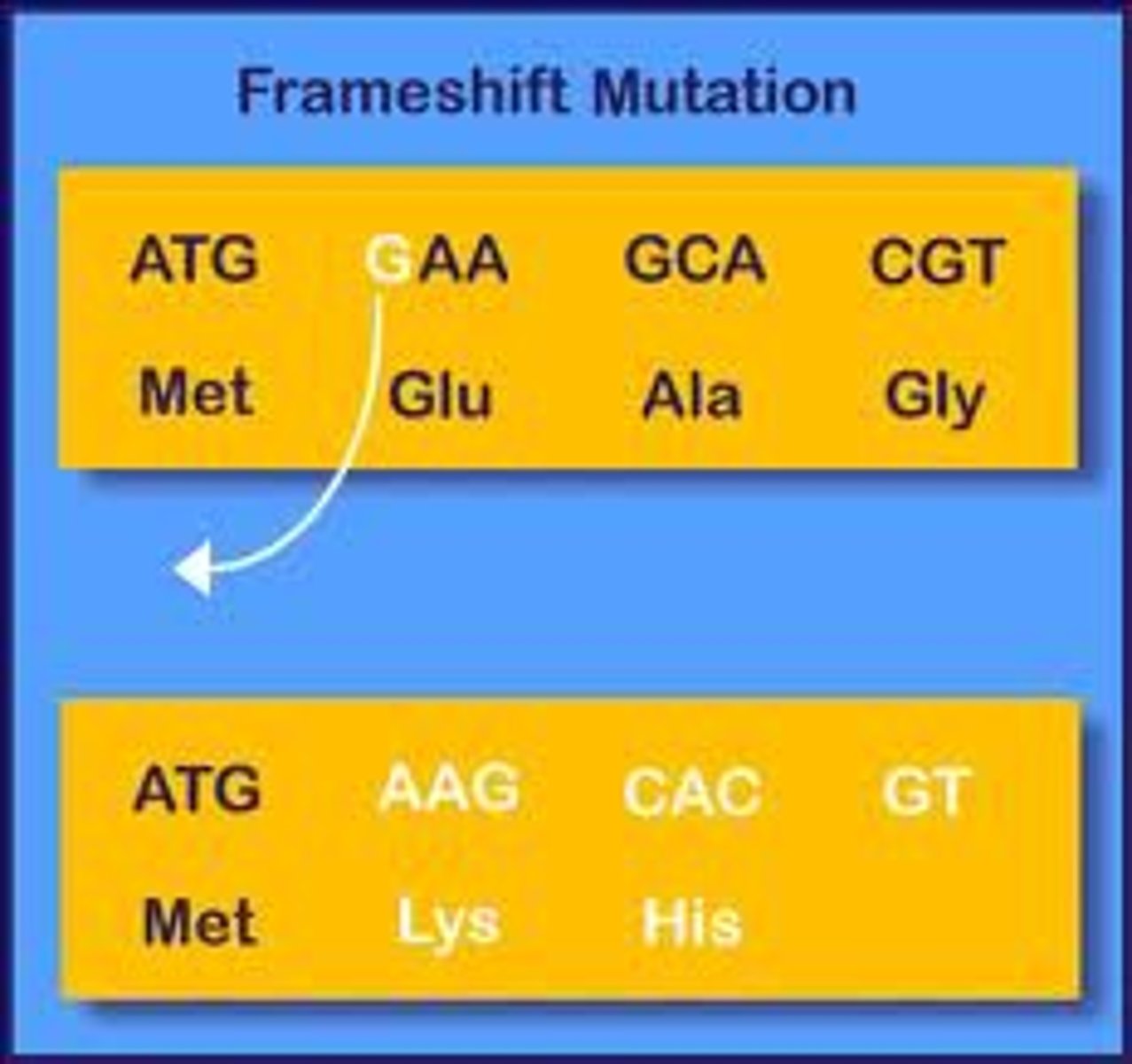
if a particular gene contains 300 bases along its sequence, how many amino acids will be strung together during protein synthesis?
100
if a protein has 150 amino acids, how many DNA nucleotides (bases) would make up that gene?
450
a protein has the following amino acid sequence. construct a DNA nucleotide sequence of this portion of the gene:
phenylalanine-glycine-alanine-proline-valine-asparagine
(this is just one possible answer due to genetic redundancy)
AAA-CCC-CGG-GGG-CAA-TTG
karyotype
a picture of all the chromosomes in a cell
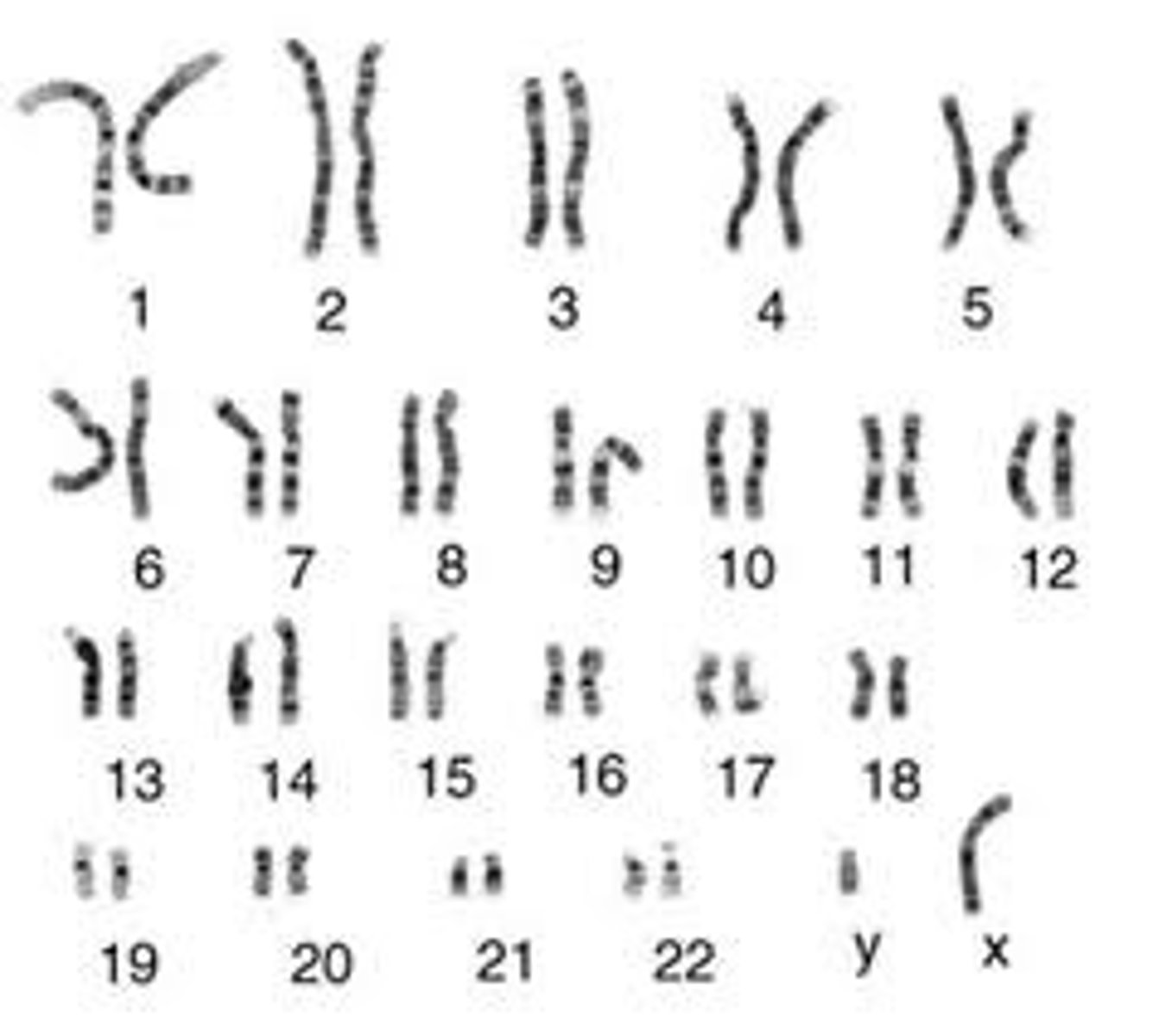
why might a diploid organism have 2 homologous chromosomes, although each homologous chromosome may carry a different version (allele) of the gene from the copy that is carried by its homolog?
a diploid organism inherited 1 homolog from 1 parent and the other from the other parent
homologous chromosomes
chromosomes that have the same sequence of genes and structure, and are paired during meiosis
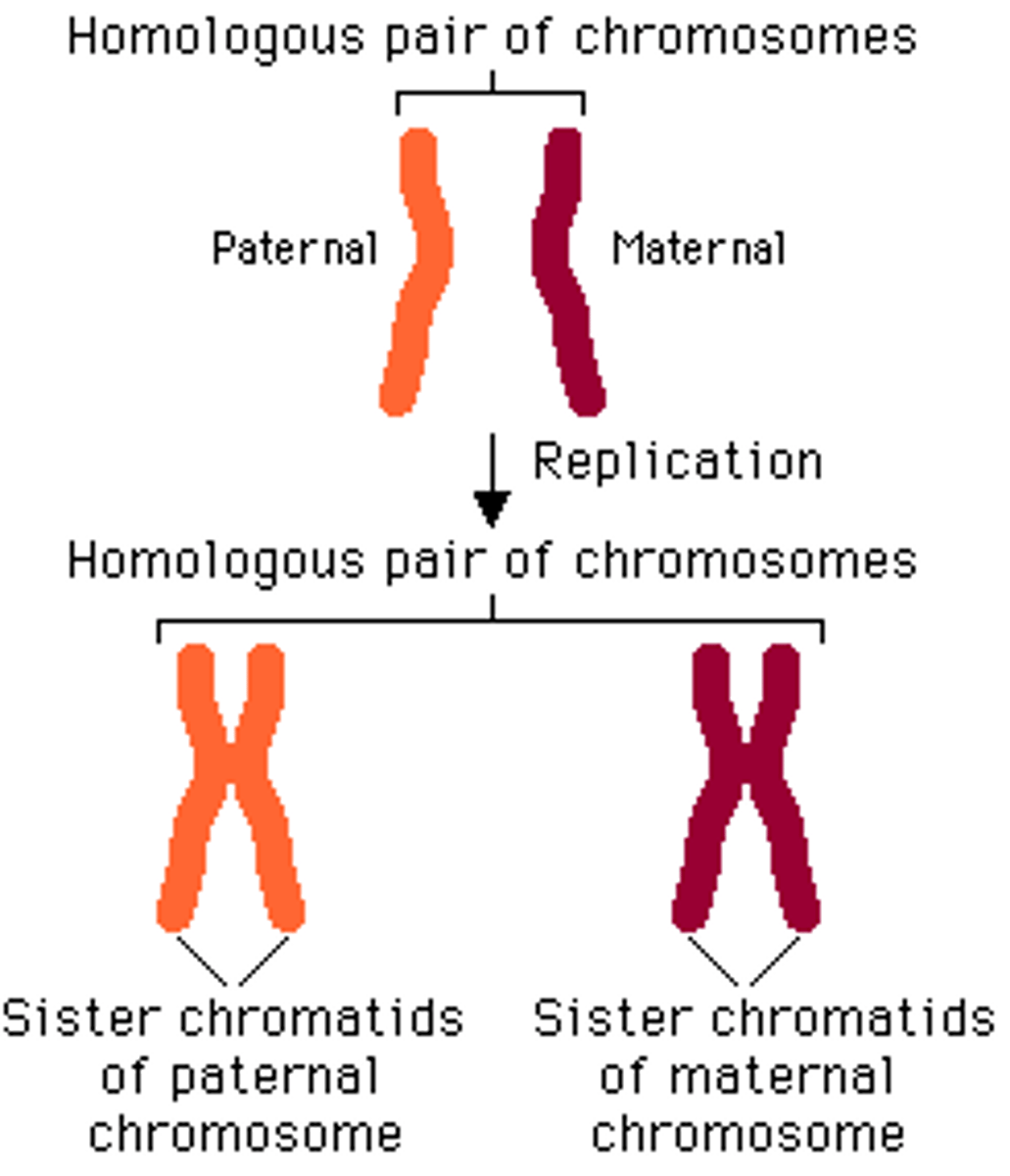
karyotype formula
homologs of each type x number of types = total number of chromosomes
(e.g. for humans, it's 2n=46)
2: two chromosomes per pair
n: 23; 23 types of chromosomes
46: total chromosomes
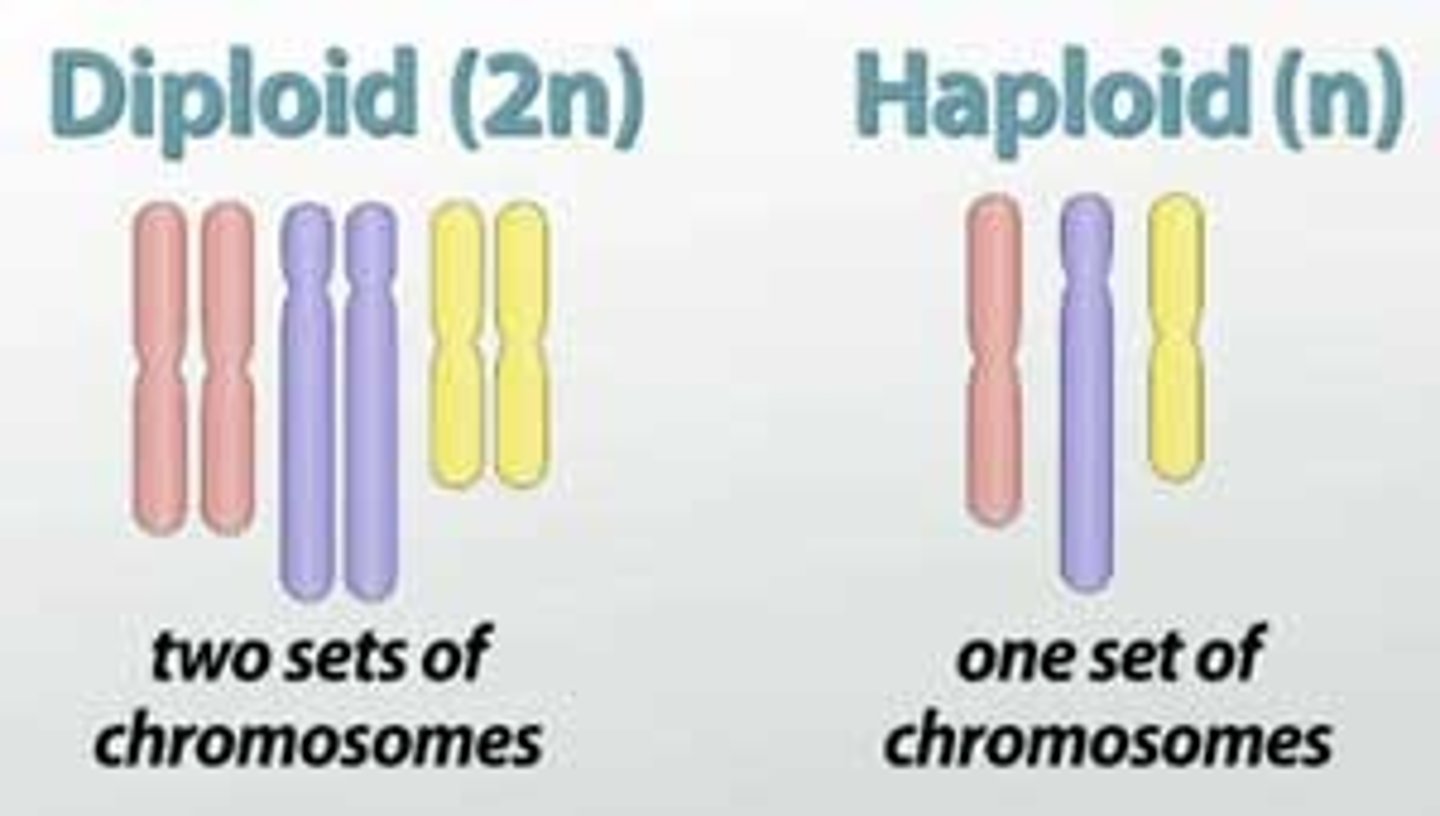
what does 4n=52 mean?
4: there are 4 chromosomes per group of chromosomes
n: 13; there are 13 different types of chromosomes in this karyotype
52: total number of chromosomes
what does 3n=6 mean?
3: there are 3 chromosomes per group of chromosomes
n: 2; there are two different types of chromosomes
6: total number of chromosomes
each cell in our body was produced from the original fertilized egg cell through mitotic cell divisions. what does that mean about the genetic information carried in each of the many cell types we have - ignoring mutations?
every cell in our body (barring mutations) has exactly the same genetic information
what feature of DNA allows for faithful copies to be made during DNA replication and passed on to the daughter cells?
complementary base-pairing rules
what model correctly represents the relationship between newly replicated and old DNA after DNA replication?
semi-conservative replication
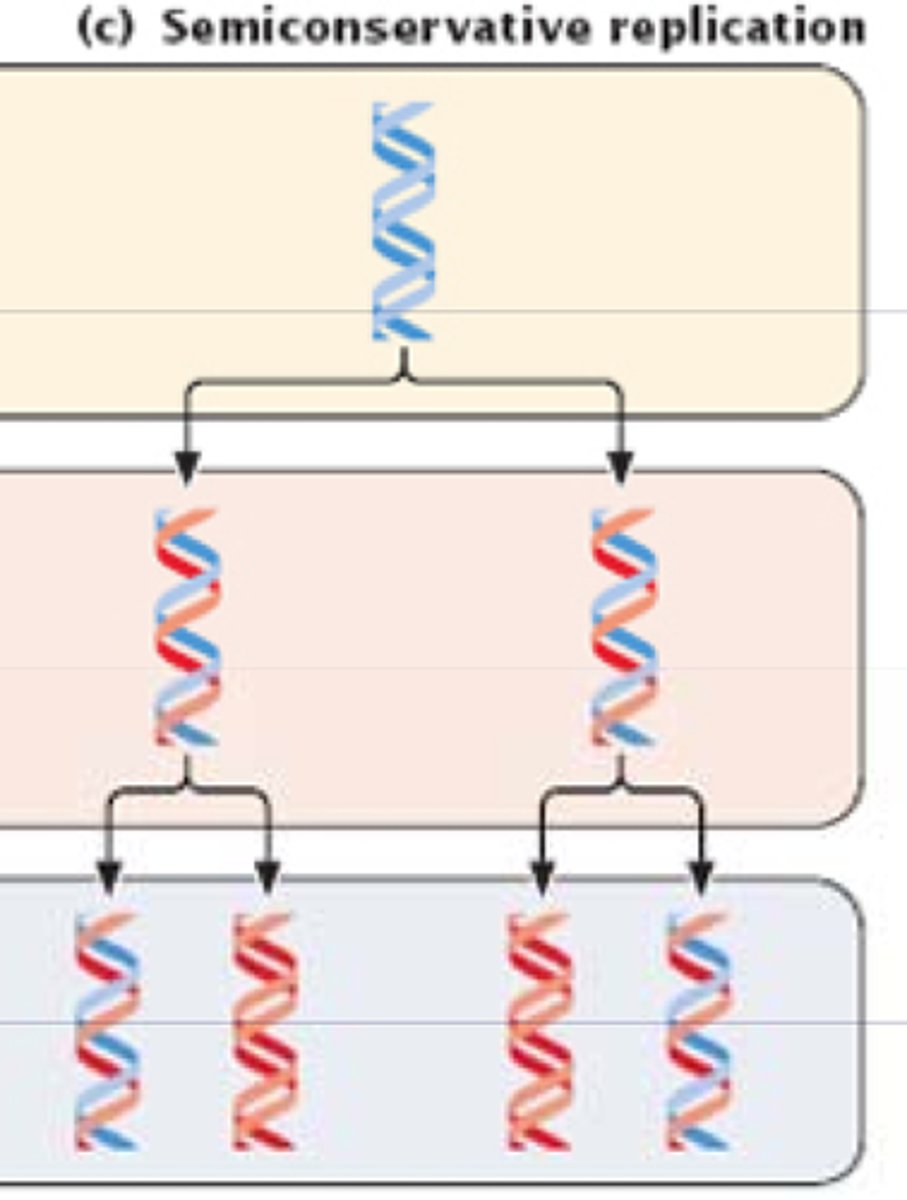
why does S-phase have to precede mitosis?
DNA has to be replicated before cell division
chromosome
a threadlike structure of nucleic acids and protein, carrying genetic information in the form of genes
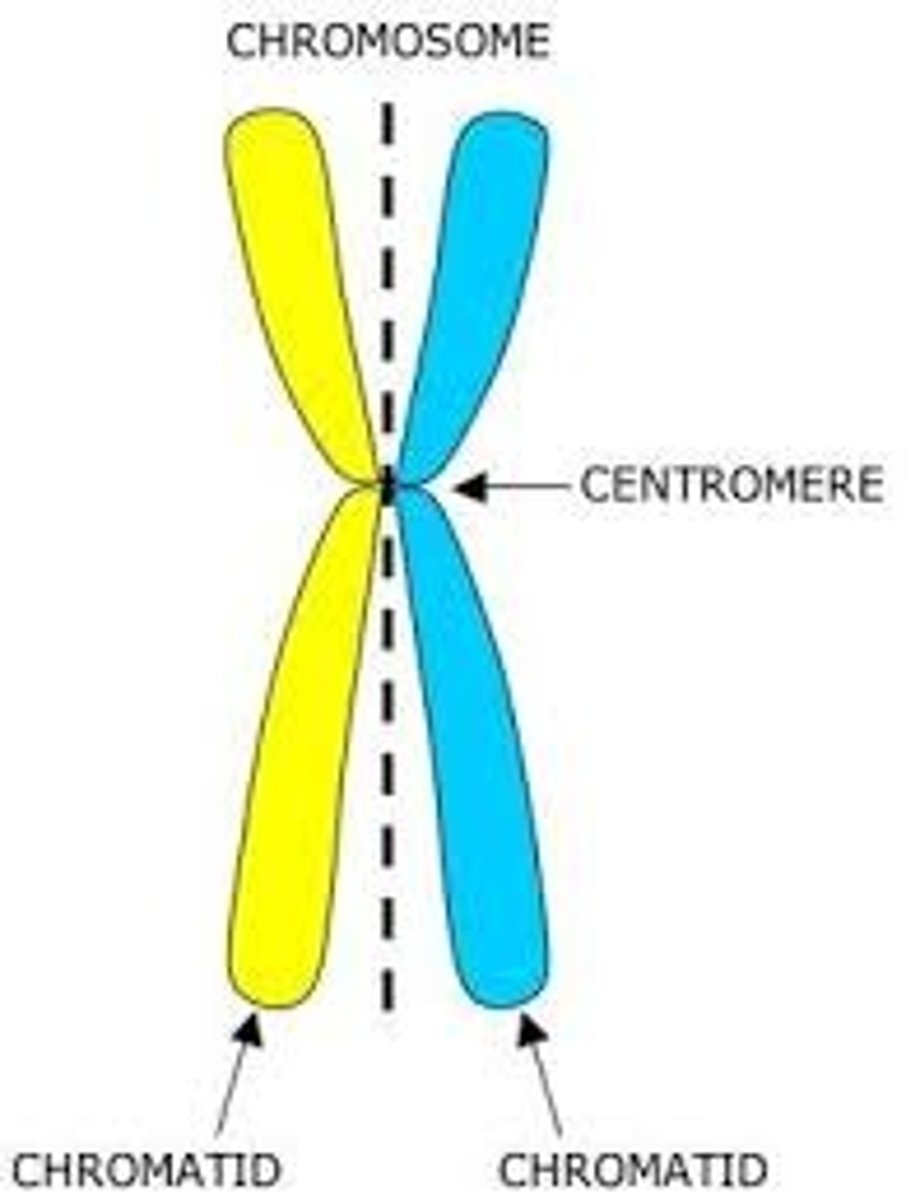
chromatid
one half of a duplicated chromosome
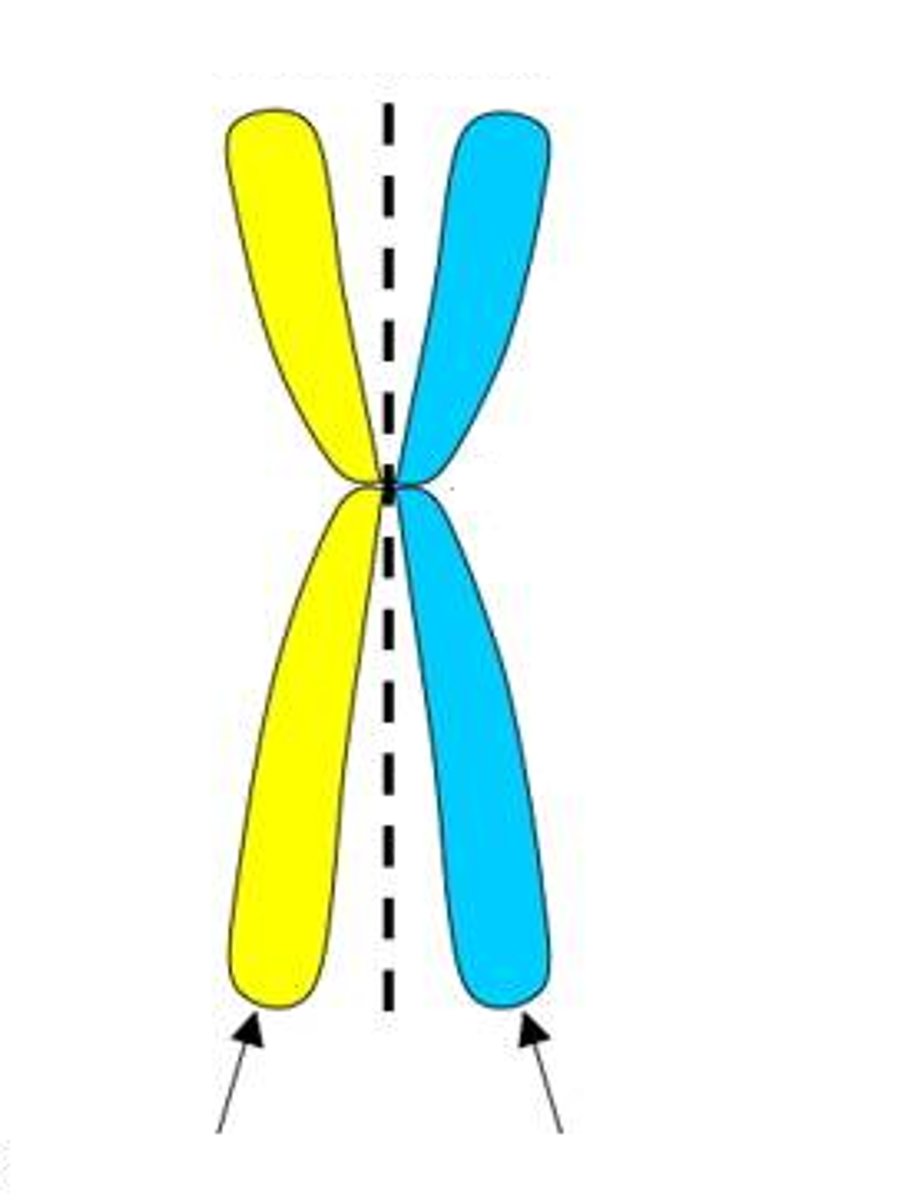
how many copies of a single autosomal gene do humans typically have in a cell during the G1 phase of the cell cycle?
2

explain how the steps of mitosis guarantee that the 2 daughter cells that are produced after cytokinesis are genetically identical copies of the original parent cell
MITOSIS STEPS:
prophase: DNA formed into chromosomes
metaphase: chromosomes in the middle of the cell
anaphase: chromosomes equally divided into two chromatids
telophase: chromatids dissolve back into relaxed forms and then the cell performs cytokinesis
since the chromosomes are divided evenly among both cells, and the chromosomes all contain the exact same DNA, the daughter cells are genetically identical copies of the original parent cell
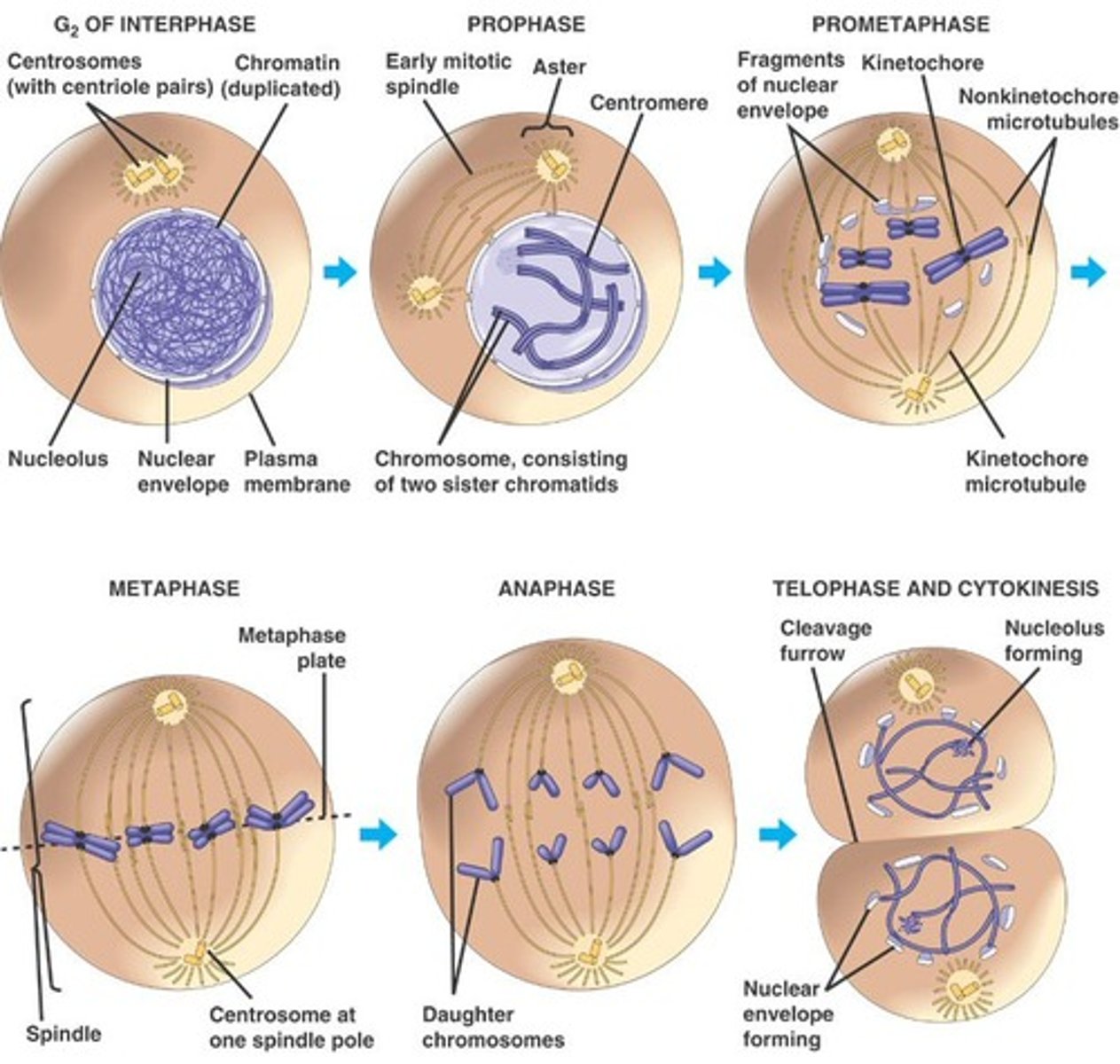
most of the genetic material of eukaryotes is located in the
nucleus
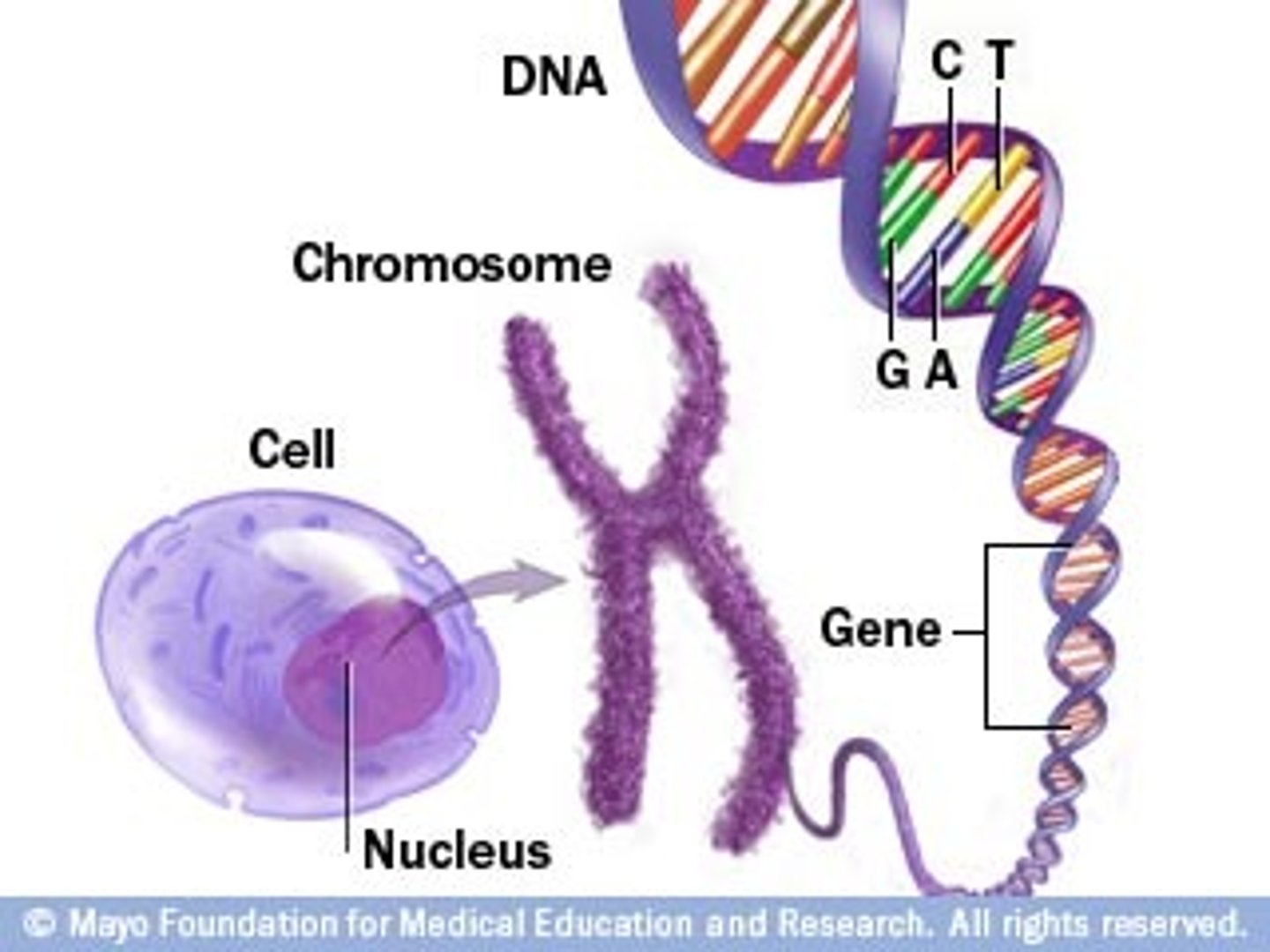
what is organized on linear pairs of chromosomes?
the genome of the organism
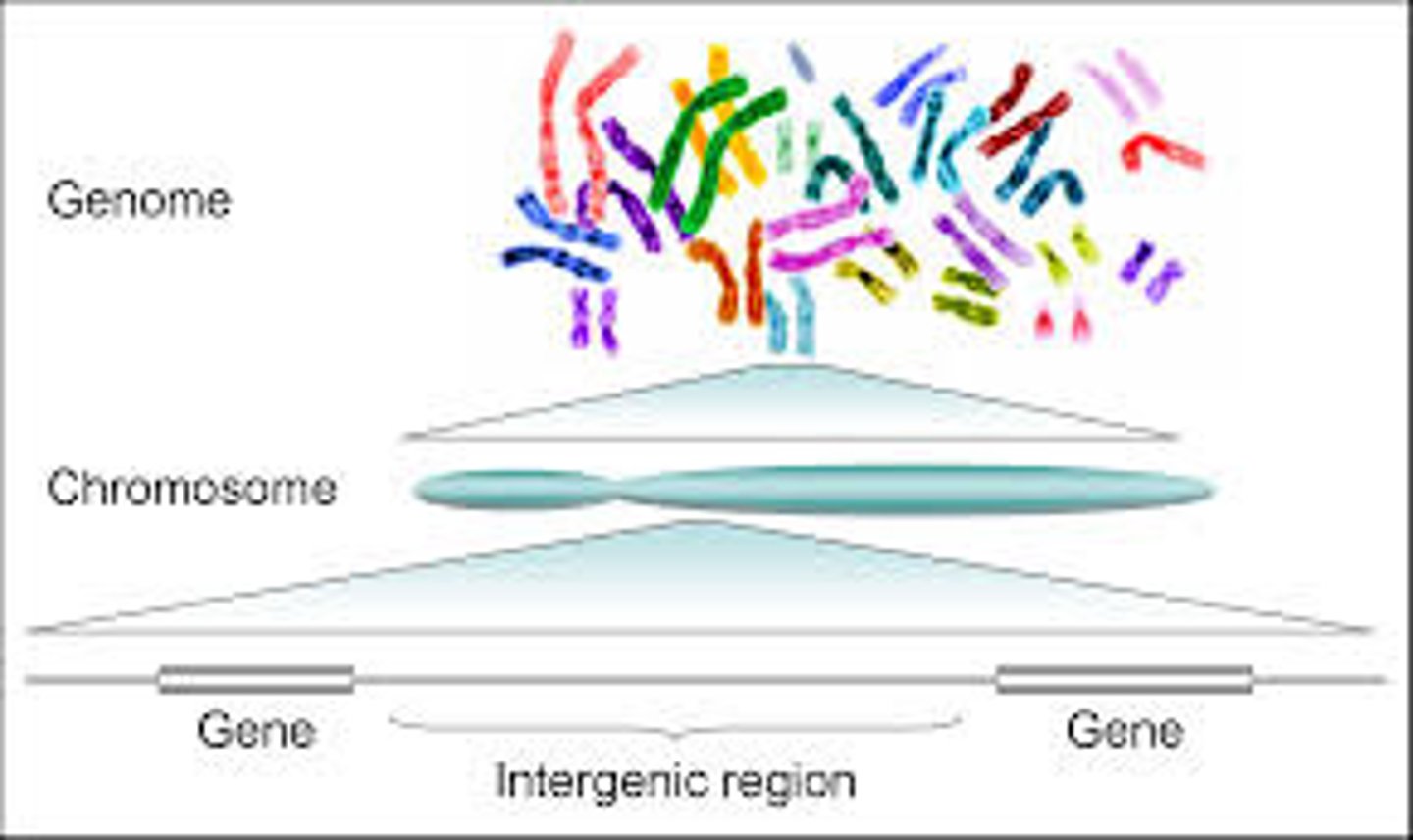
what consist of long, unbroken double-stranded molecules of DNA?
chromosomes
what's the sequence of nucleotide bases that carries genetic information to make proteins?
DNA
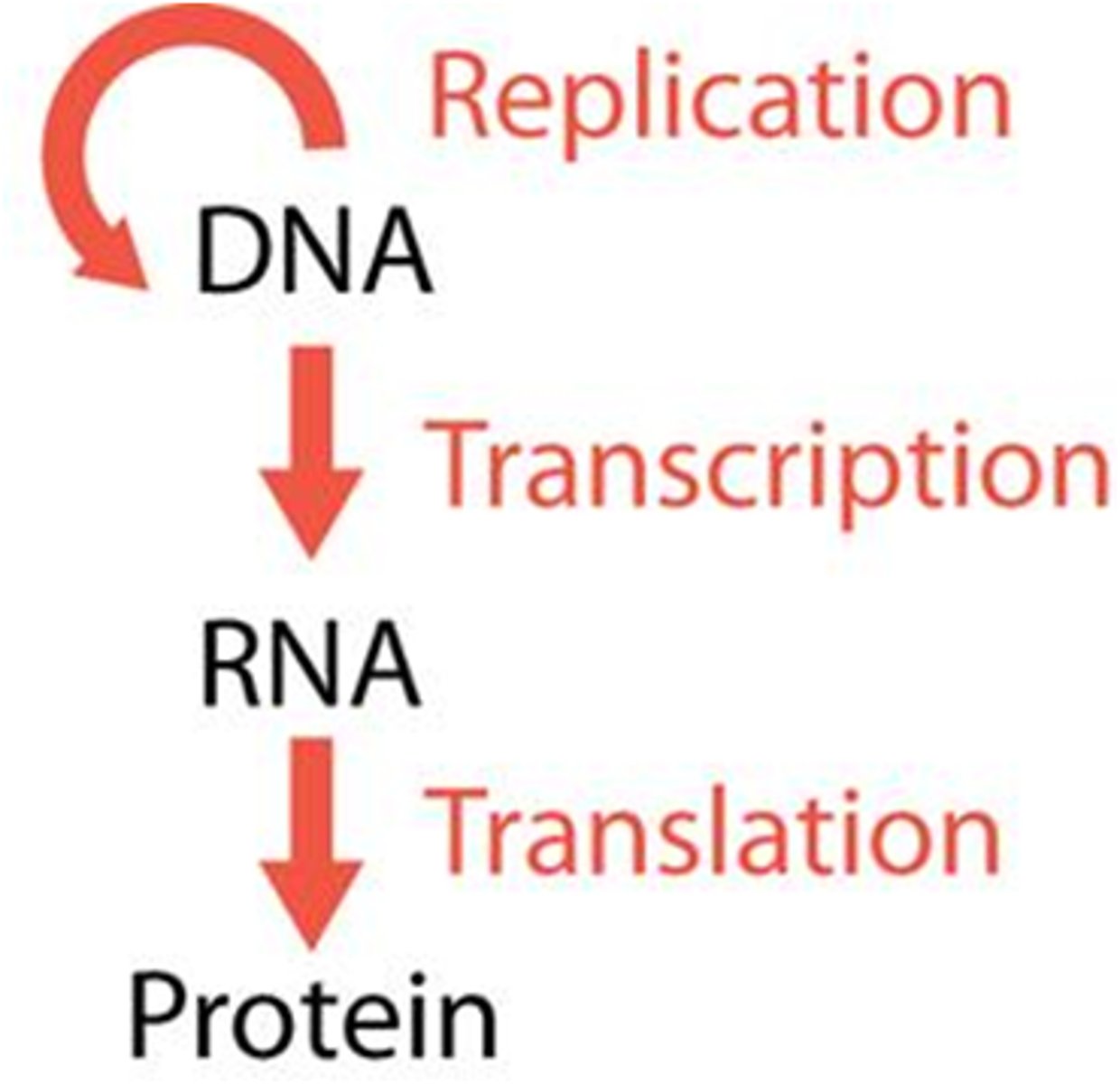
what links your genotype to your phenotype?
the action of the proteins encoded by genes (links your genotype to your phenotype)
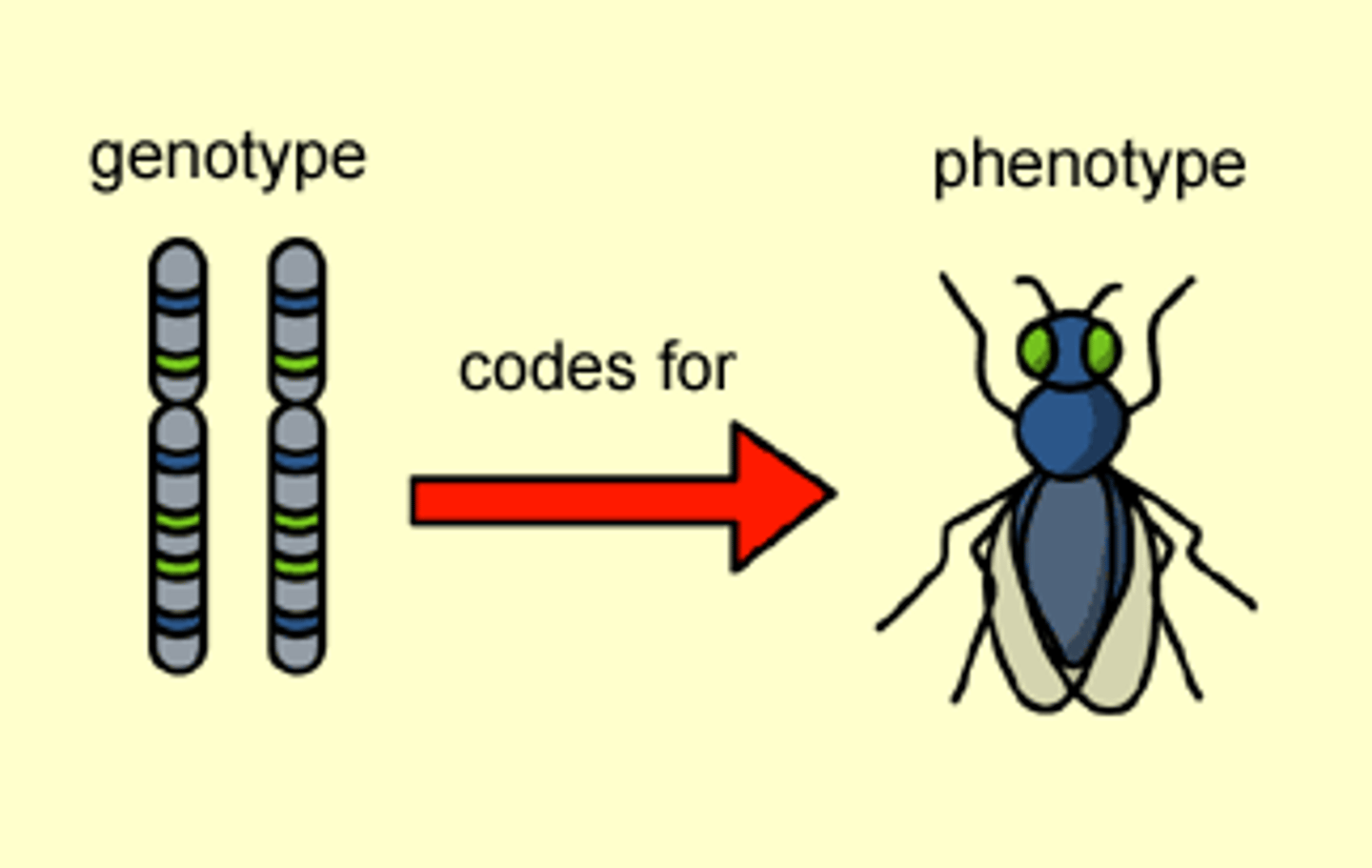
a single, double-stranded molecule of DNA in the condensed state
what does this structure represent on a molecular level?

centromere
the region of the chromosome that holds the two sister chromatids together during mitosis
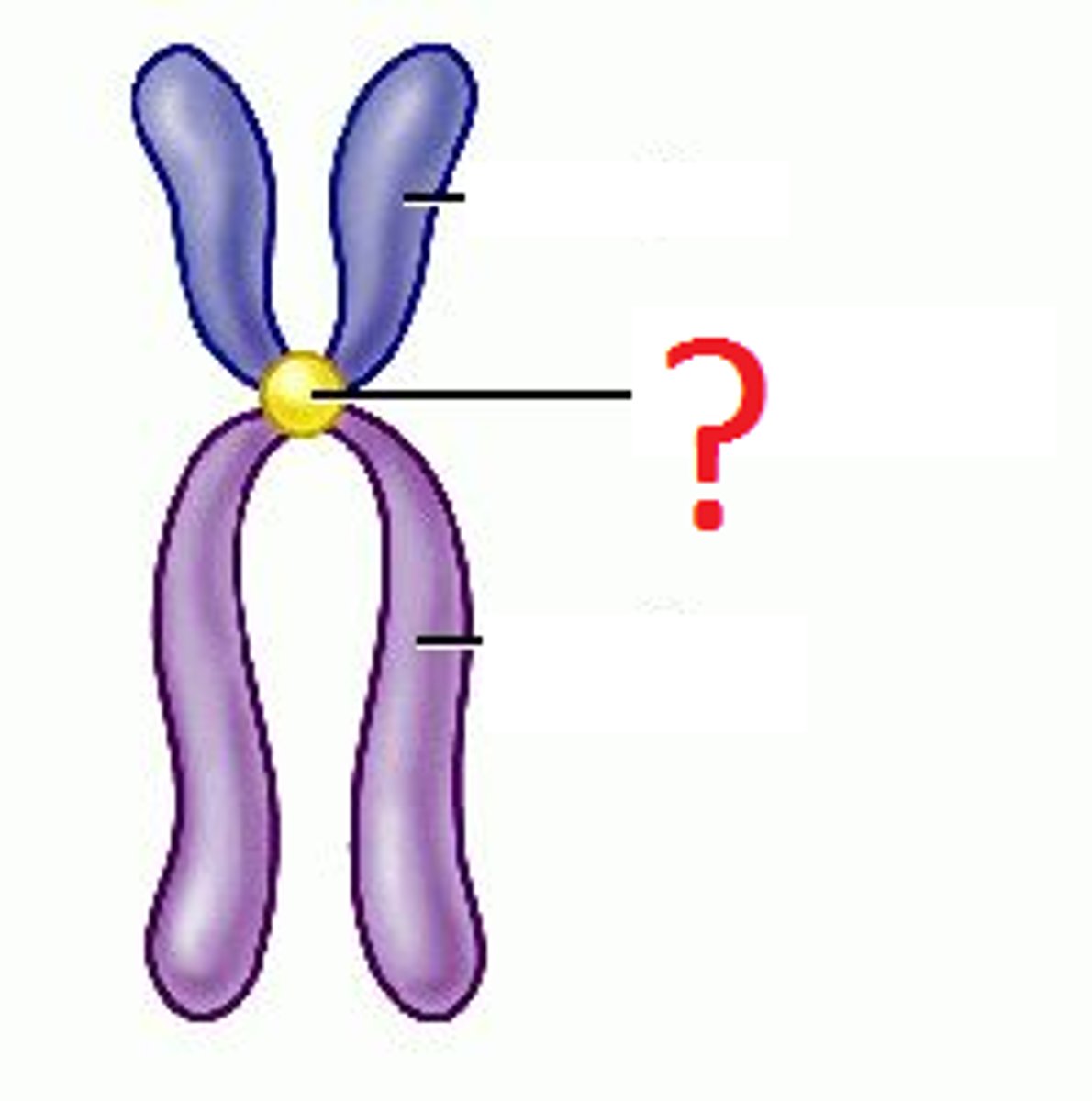
gene locus
location of a gene on a chromosome
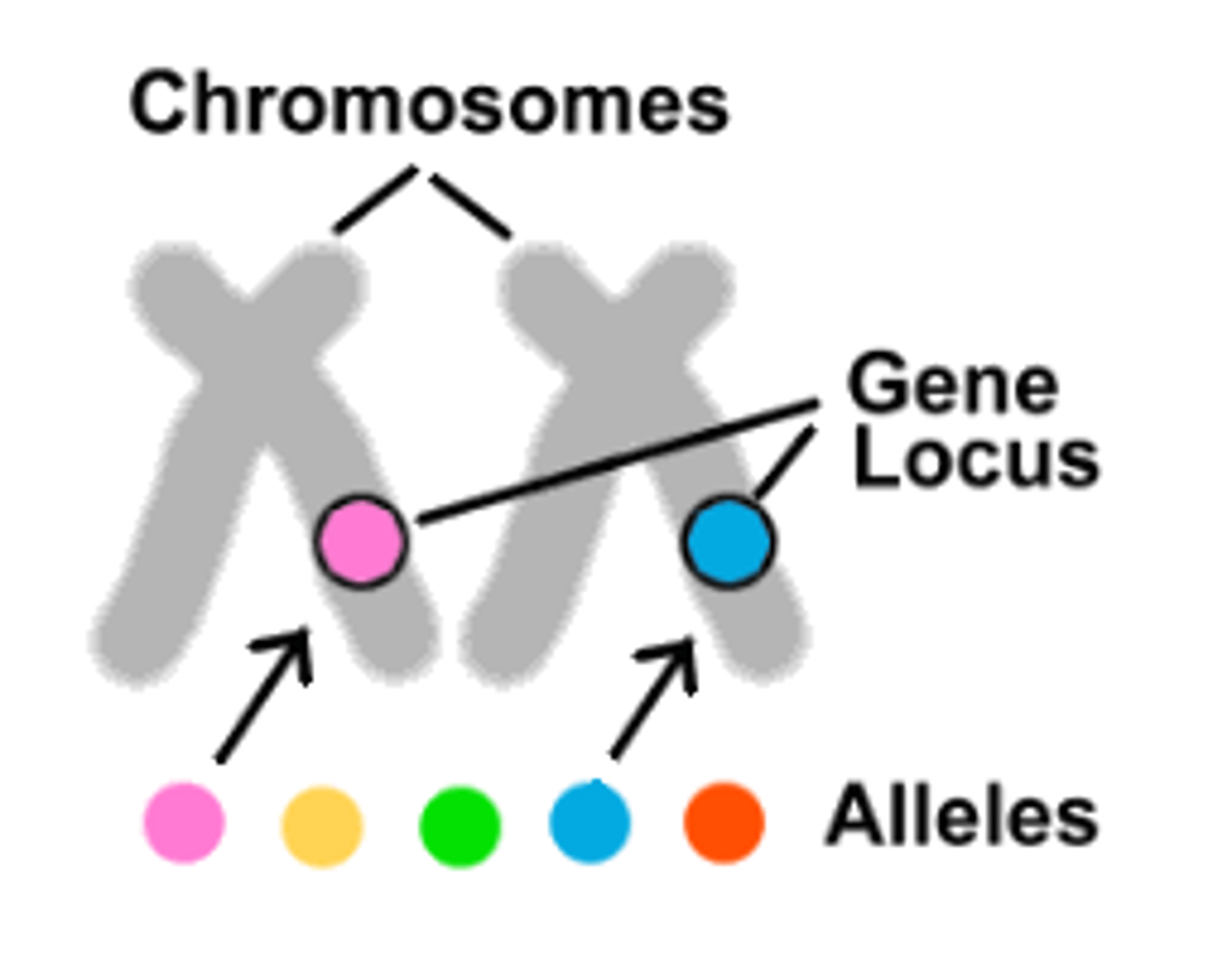
sister chromatids
replicated forms of a chromosome joined together by the centromere
(the two chromatids on a single homolog)
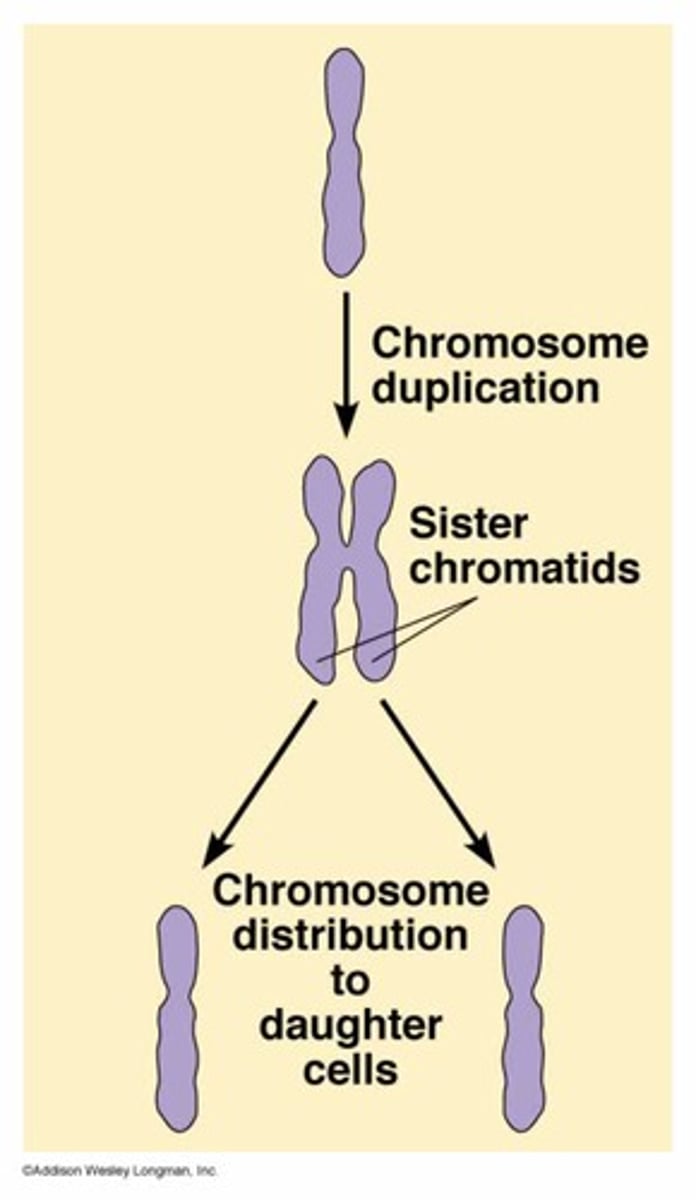
mitotic cell division (mitosis)
1. chromosomes are uncondensed in nucleus of cell
2. replicated chromosomes condense and nuclear envelope dissolves
3. spindle fibers attach to centromere and pull chromosomes to metaphase plate
4. sister chromatids separate and are pulled by spindle fibers toward poles of cell
5. nuclear envelope reforms, chromosomes decondense, and cytokinesis follows
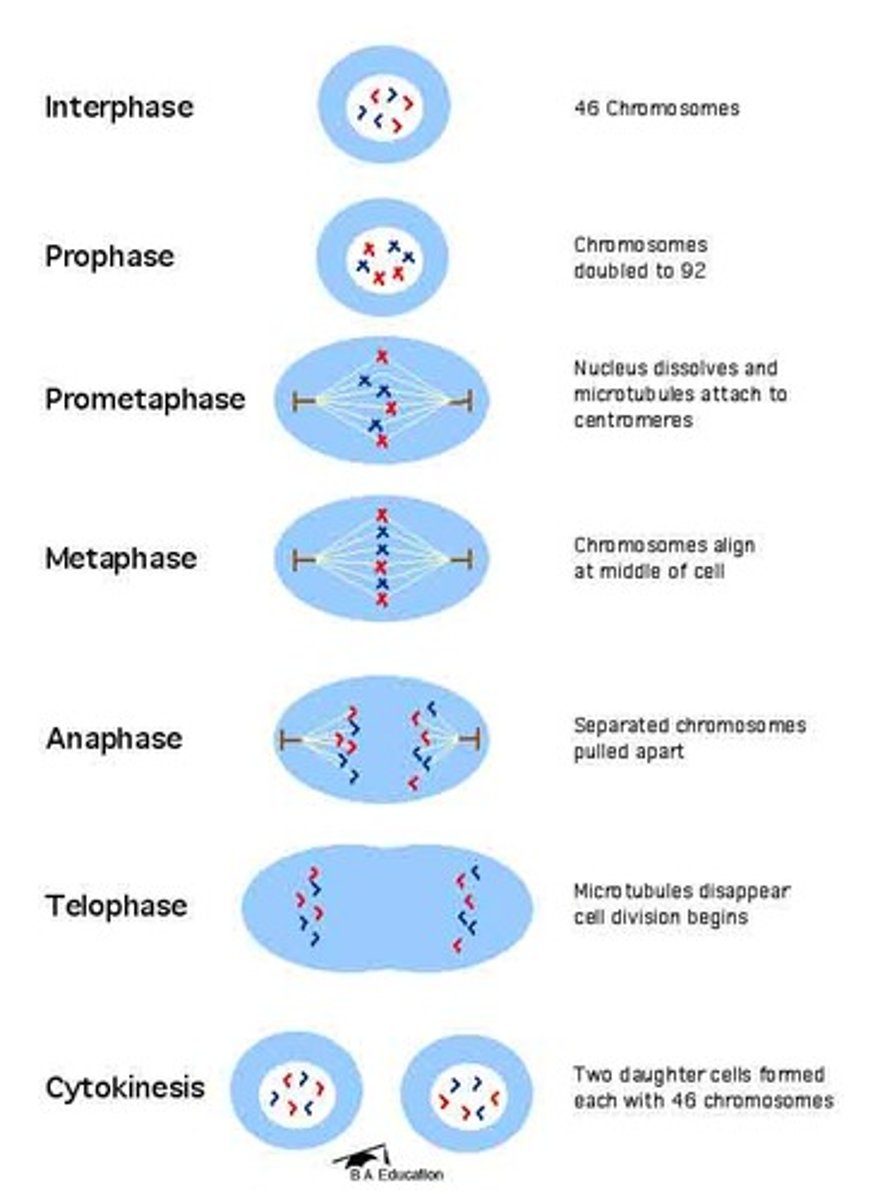
in Morse code, a series of two signal types (dots and dashes) code for 26 different letters of the alphabet. How is this analogous to the genetic code?
the bases of DNA code for the more complex amino acid sequence of the proteins in cells
transcribe the transcribed (template) strand of DNA into mRNA:
CAATGGCTA
GUUACCGAU
DNA transcribed (template) strand 5'___3'
DNA non-transcribed (sense) strand 3'___5'
Given the locally unwound double strand above, in which direction does the RNA polymerase move while transcribing DNA?
3' to 5' along the transcribed (template) DNA strand
what establishes the reading frame for an mRNA transcript?
the first start codon encountered by ribosomes
how will ribosomes translate this sequence into a polypeptide chain?
5'-UCUGAUGGGCUGAGUA-3'
----AUG-GGC-UGA----
AUG - methionine (start)
GGC - glycine
UGA - stop
what is the amino acid sequence that corresponds to the following abbreviated DNA sequence?
5'-TATGAAAGT-3' non-transcribed
3'-ATACTTTCA-5' transcribed
ATACTTTCA
-> UAUGAAAGU
-> Y E S
different coat colors in mice phenotypes are directly caused by
differences in protein amino acid sequence
(while the genotype determines what traits are passed on, it is the proteins they code for that immediately affect an organism's phenotype)
the phenotypic variation in the coat color trait in mice is passed from a parent to their offspring via _____.
differences in DNA sequences in different parents
what is true about mutations?
mutations are the only source for the origin of new alleles
both substitution and indel mutations could result in a non-sense mutation in the affected codon following the mutational event
what is false about mutations?
indel mutations that occurred in an exon (translated part of the gene) can be silent
a substitution mutation can lead to a frameshift
consider the wild-type DNA sequence: 3'-ATACTTTCA-5'. which of the following shows an indel mutation of the wild-type DNA sequence shown above that does NOT result in a frameshift mutation?
a. ATA['']TTCA
b. ATA[''']TCA
c. ATTACTTTCA
d. A[''']TTTCA
b. ATA[''']TCA
d. A[''']TTTCA
transcribed strand: 3'-ATACTTTCA-5'
write one of the possible DNA sequences of the transcribed strand that results from both a single substitution mutation of the first codon that would also cause a nonsense mutation
ATACTTTCA
-> ATTCTTTCA
bacterial genome contains
plasmids
bacterial "sex" (compared to true sex)
bacteria exchange plasmids (which can code for resistance for antibiotics)
eukaryotic sex is different because it exchanges genetic material. eukaryotes do not contain plasmids, and cannot inherit resistance like bacteria do.
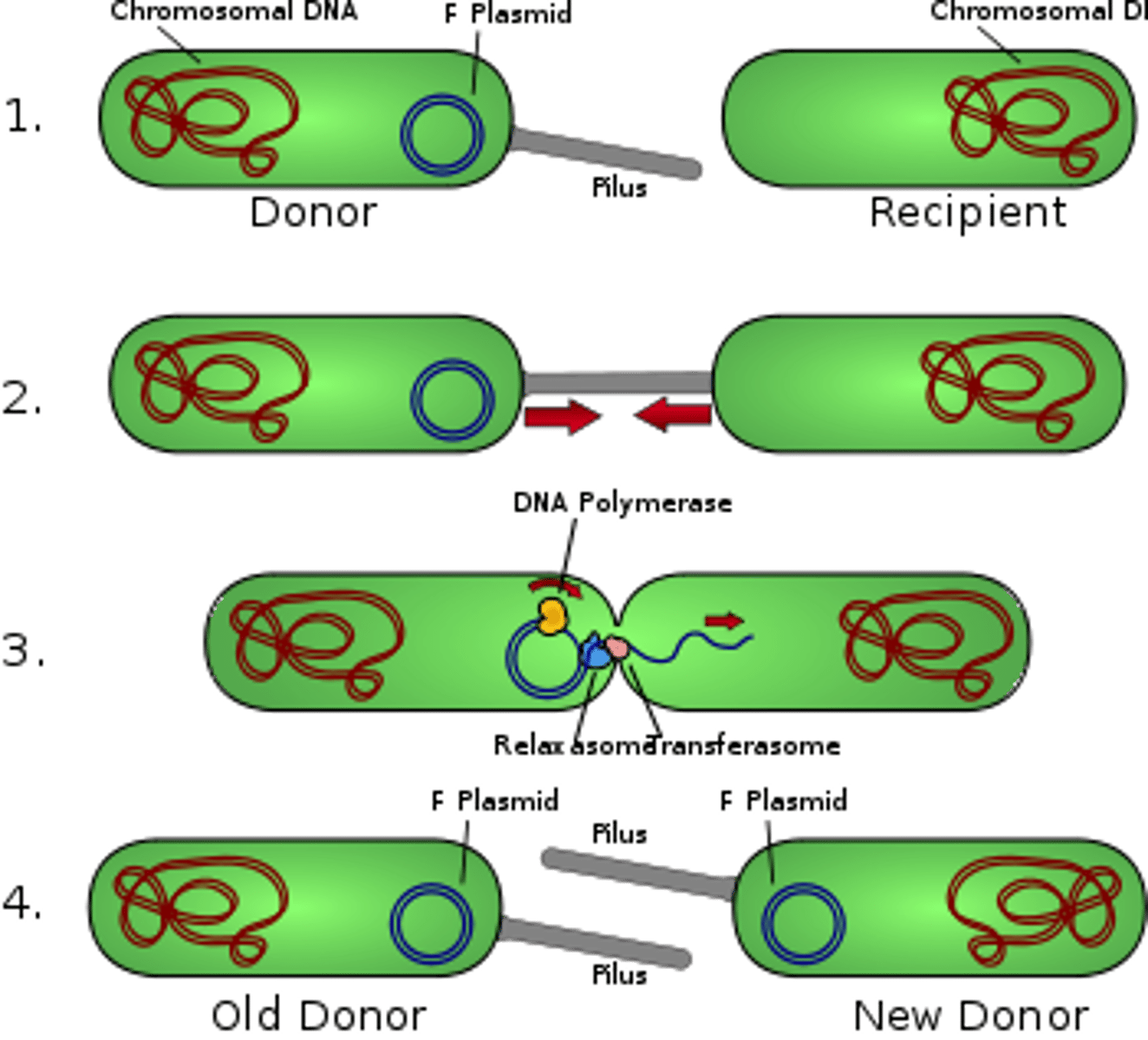
syngamy
the fusion of two gametes in fertilization
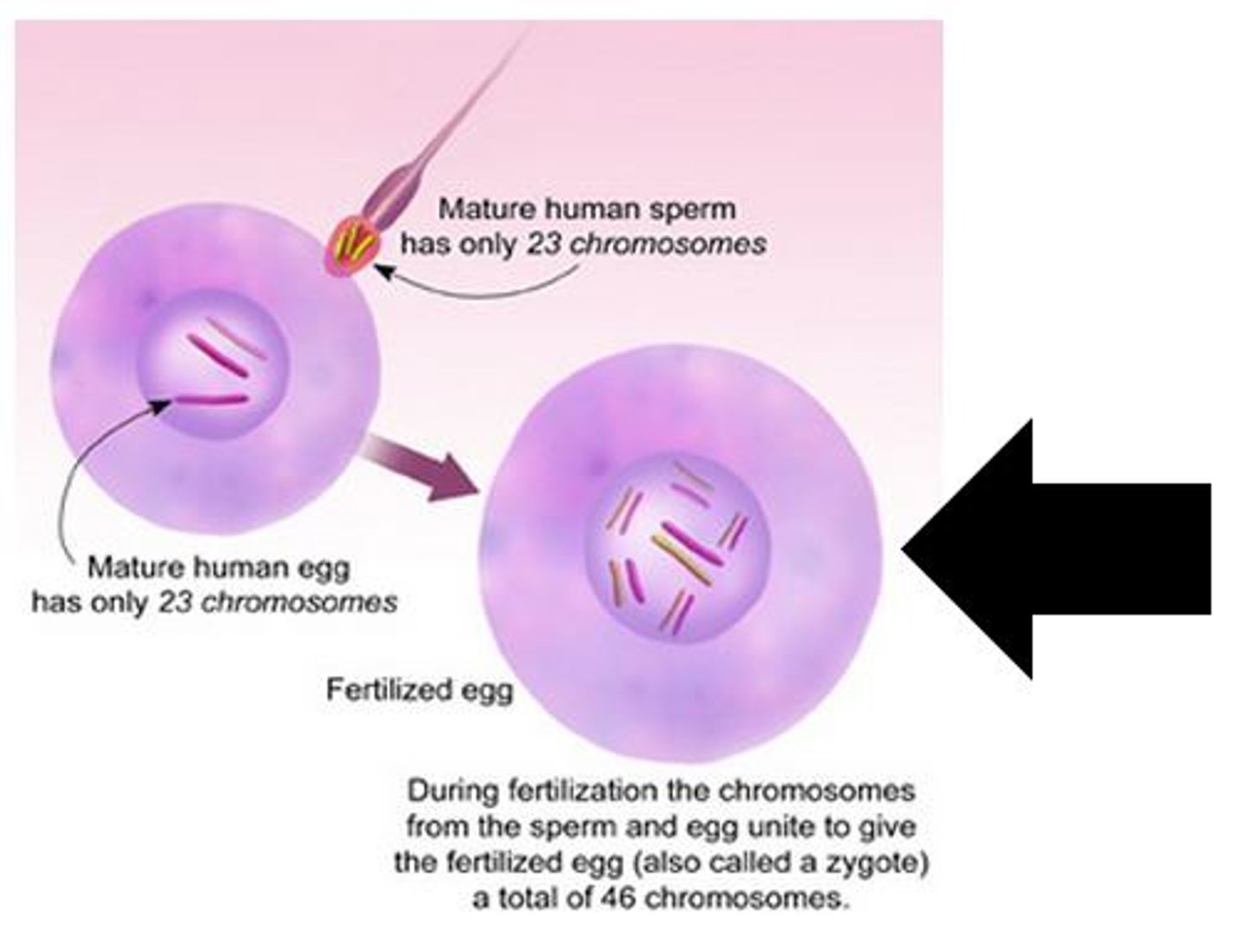
fertilization
fusion of an egg and sperm cell
(recombine entire genome by fusion of sex cells)

what issue would you run into if we simply keep merging cells through fusing them together, over and over again?
the number of homologs of each chromosome type would double every generation
what is true about the life cycle of animals?
gametes are produced by meiosis
somatic cells are produced by mitosis
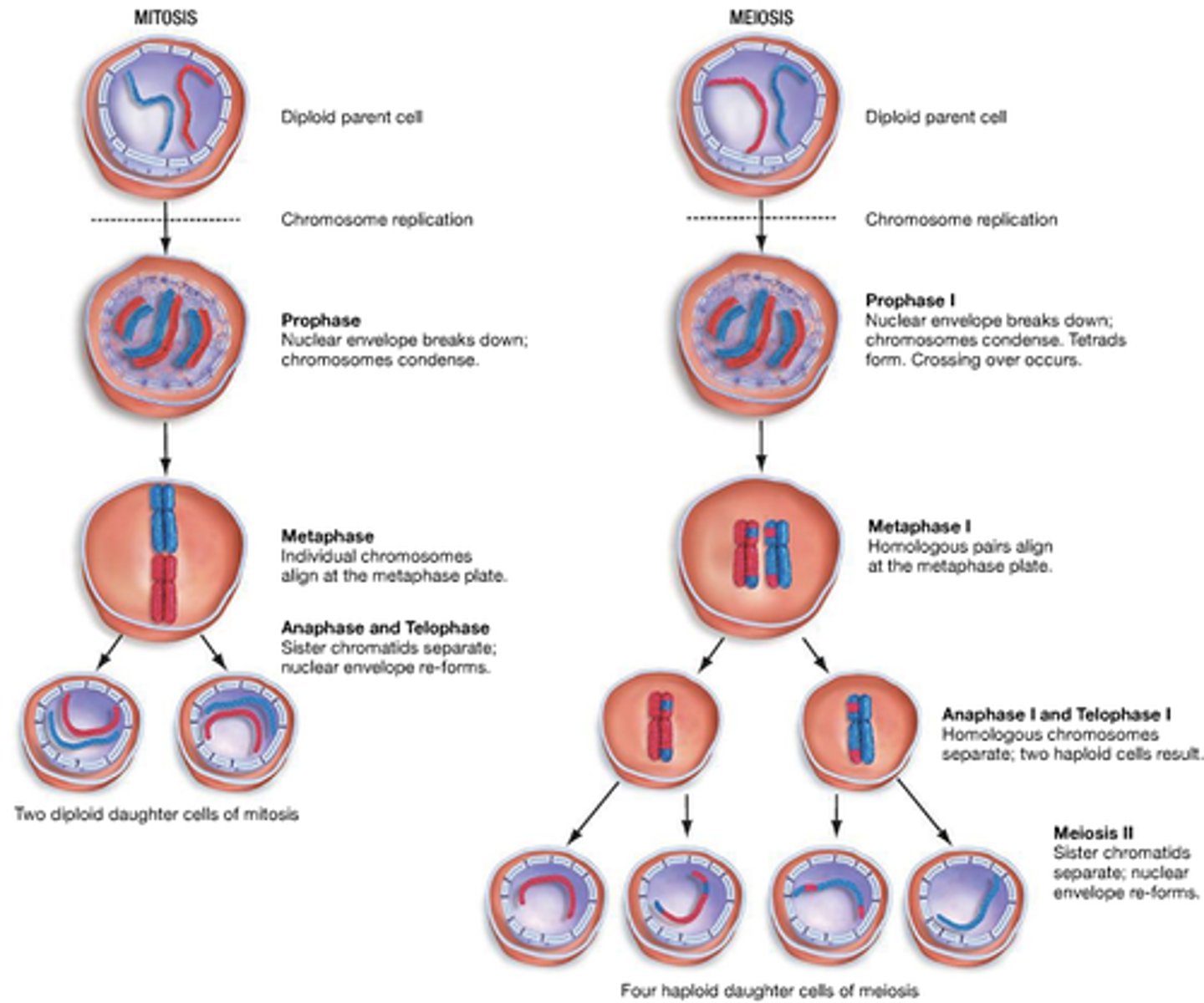
every sexually reproducing organism has a special cell division prior to fertilization
(where the chromosome number is halved)
in fungi and plants, are gametes produced by mitosis or meiosis?
mitosis in a haploid multicellular stage (fungi) and/or gametophyte (plants)
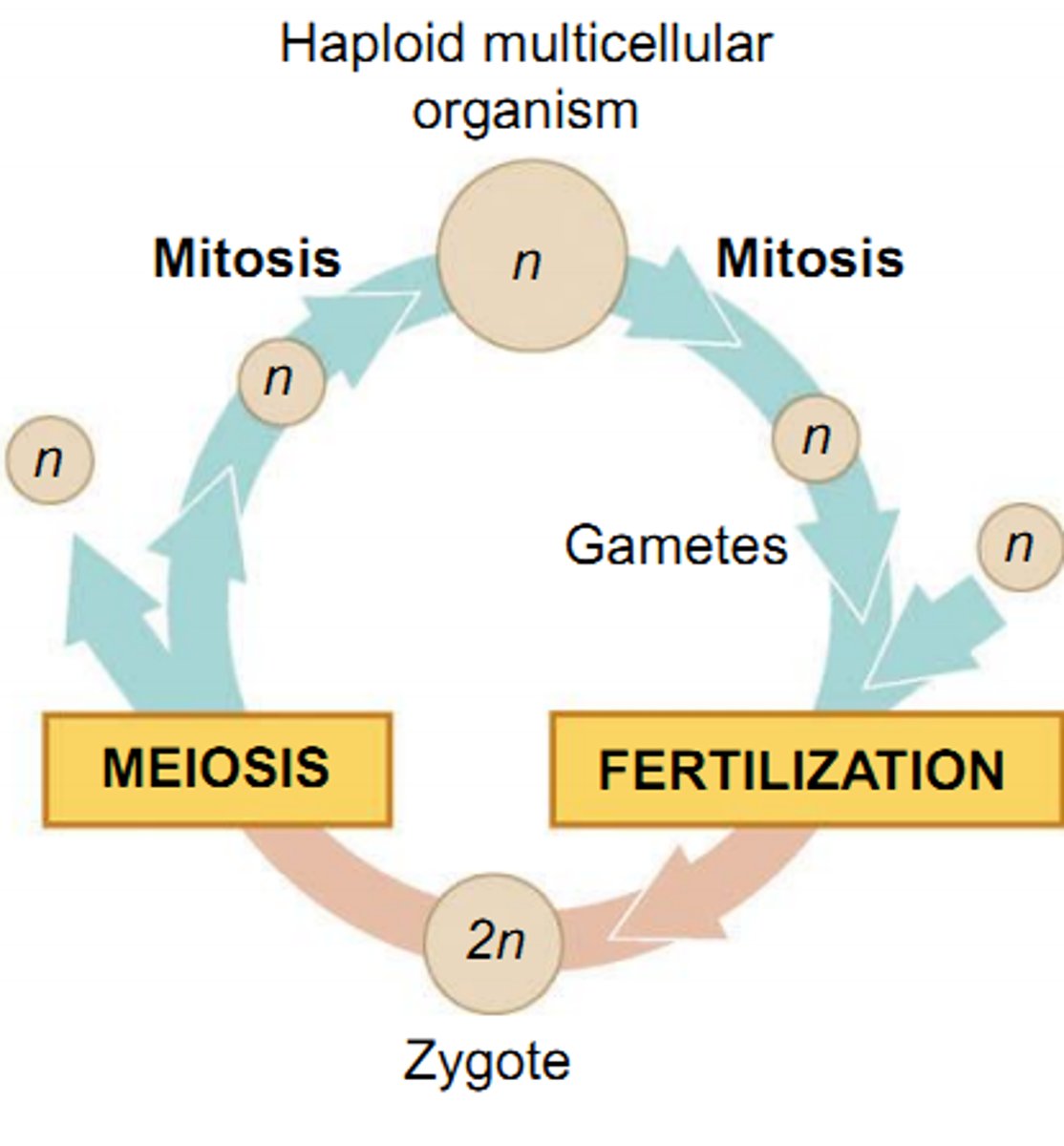
by the end of Meiosis I, we have 2 daughter cells that are ...
haploid, but each chromosome is a replicated chromosome with 2 sister chromatids
a cell that is getting ready for meiosis consists of ...
a diploid cell that has (homologous) chromosomes that came from that individual's parents
- each homologous chromosome is a replicated chromosome that consists of two sister chromatids
- gametes (cells that have gone through meiosis) can only have one homologous chromosome (these gametes are haploid) and that consist of a single chromatid, where each chromosome is one molecule of DNA
meisosis I
replicated homologs are split into two new cells, two chromatids in each
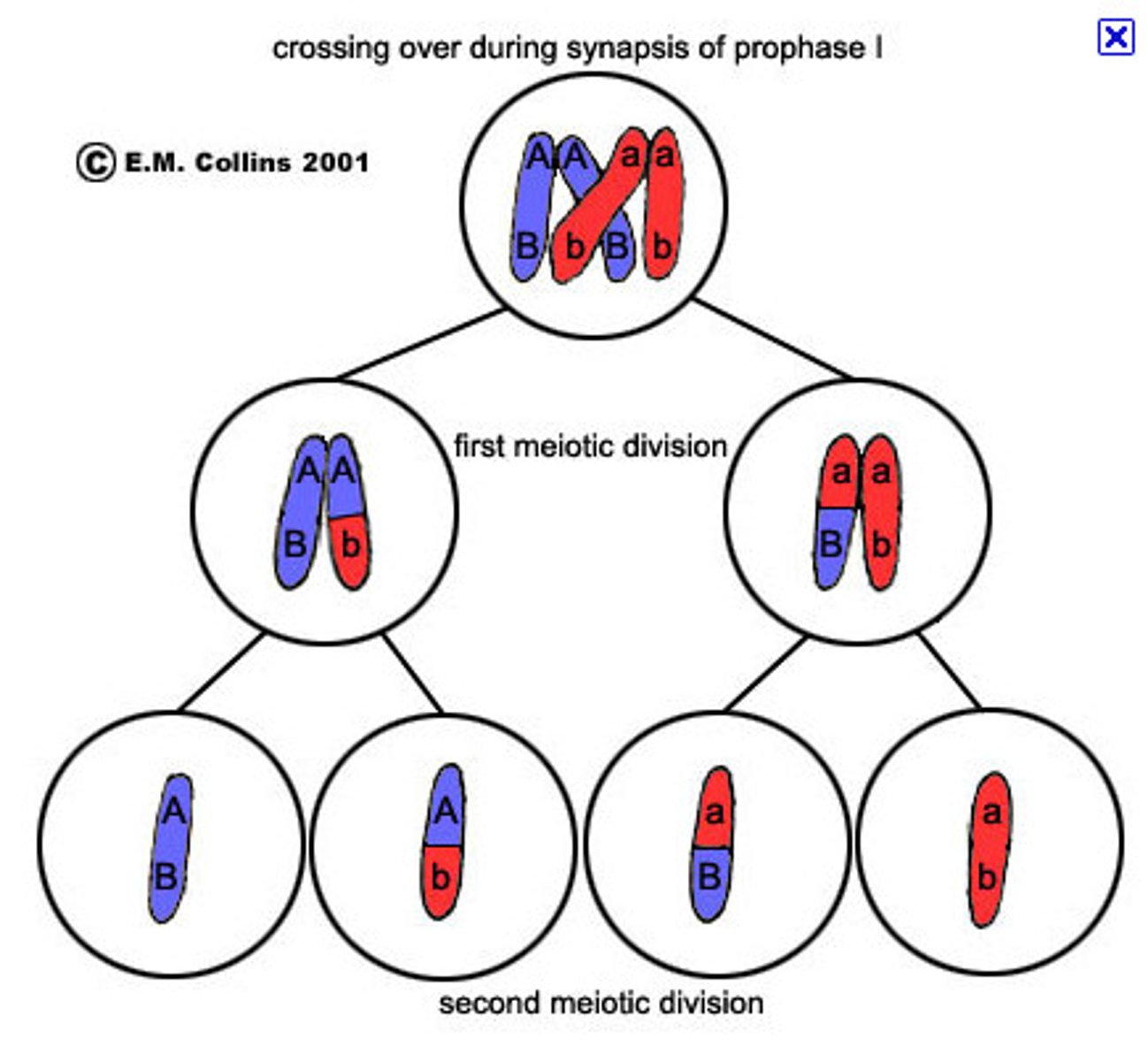
meiosis II
in each daughter cell, chromatids are split into two new cells (creating four cells total)
- this is like meiosis I except it happens in a haploid cell
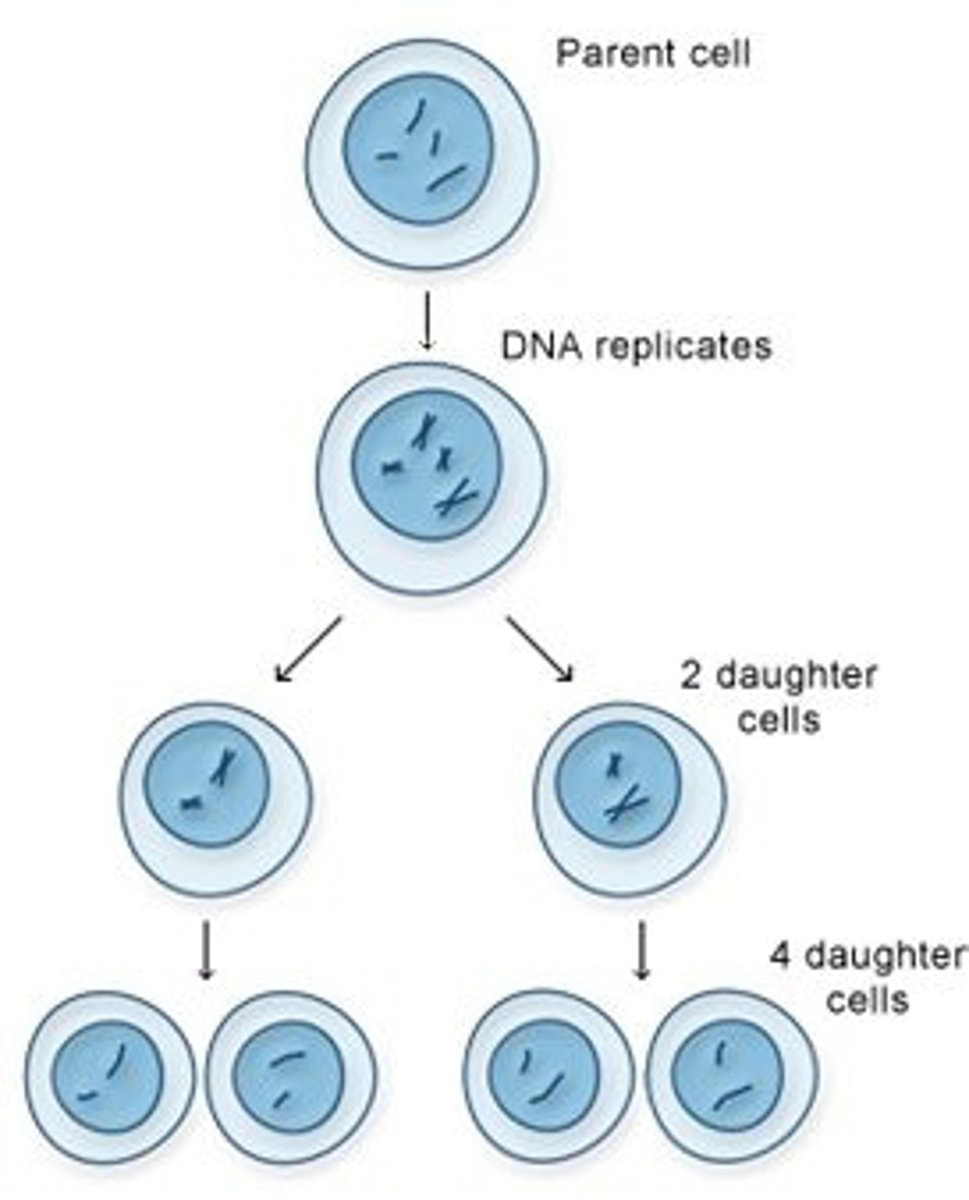
synapsis
during prophase I (in meiosis), homologous chromosomes are held together by proteins in the synaptonemal complex (homologous chromosomes are stuck together)
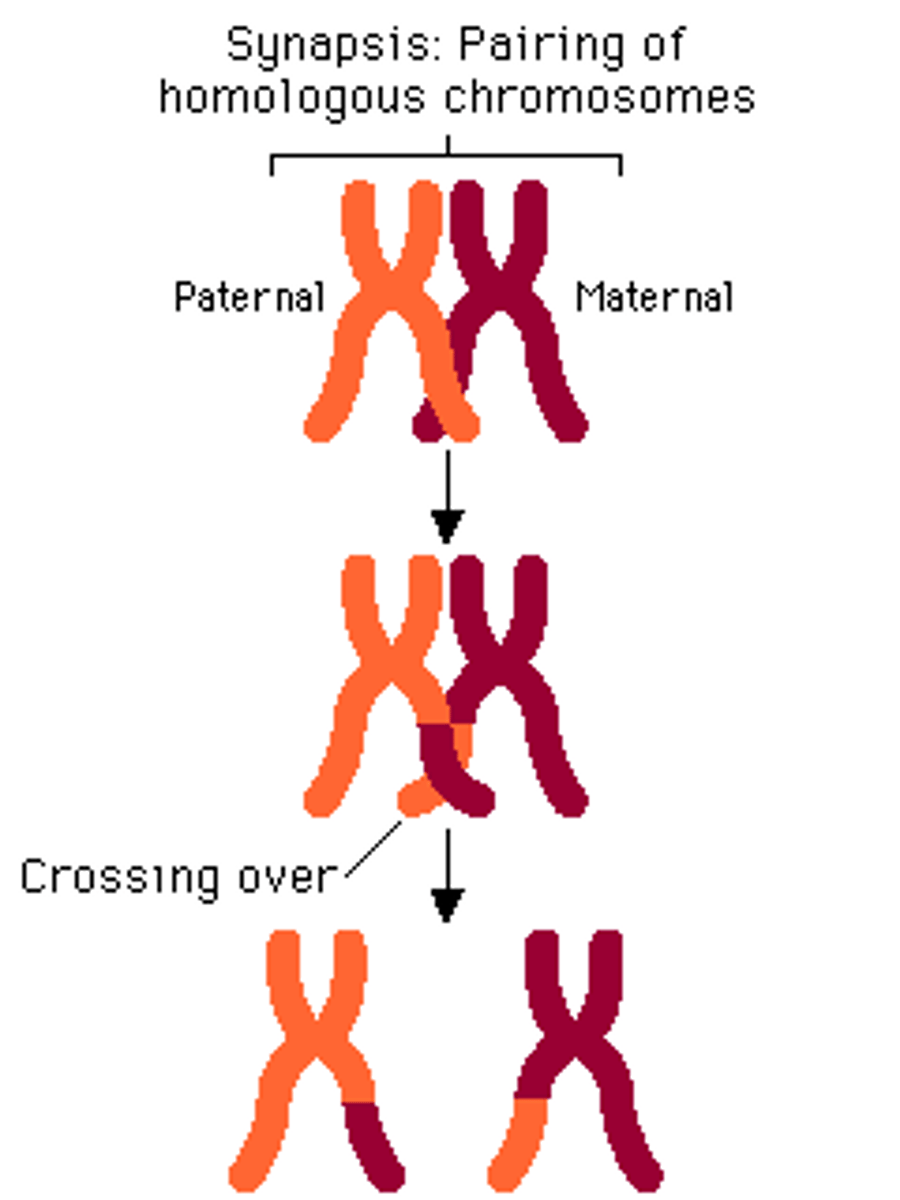
non-sister chromatids
chromatids on two separate homologs of the same chromosome type

In meiosis II, since sister chromatids get separated, this means that
chromosomes go from being replicated (single replicated copies with 2 sister chromatids) to being unreplicated (single sister chromatids)
how many copies of each gene does a diploid cell carry (assuming chromosomes are unreplicated)?
2
the two homologs of each chromosome type carry a copy of the same genes. so, a diploid (unreplicated) cell will have 2 copies of each gene (one per homolog)

if a cell has 2 types of chromosomes (genes), each with unique alleles, how many distinct combinations of alleles of 2 genes could occur as gametes at the end of meiosis?
(the genes code for black hair, red hair, brown eyes, green eyes)
4
black hair + brown eyes
black hair + green eyes
red hair + brown eyes
red hair + green eyes
independent assortment
the random distribution of the pairs of genes on different chromosomes to the gametes
(assortment of the genes in the gametes is independent of the parent assortment, it's completely random)
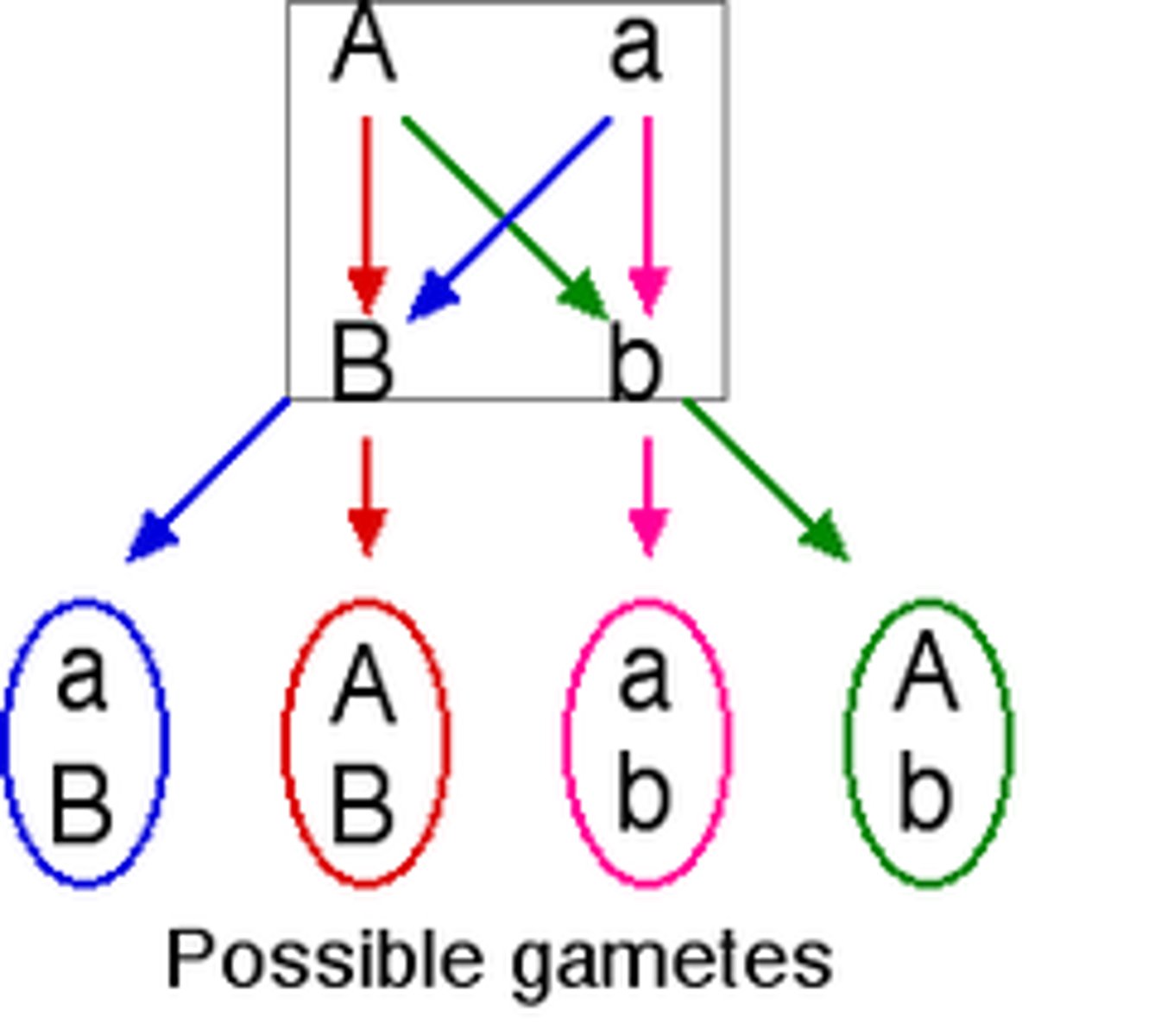
to figure out what the gametes were that produced the mother cell before meiosis:
look at the alleles inherited from the maternal homologs
look at the alleles inherited from the paternal homologs
can two genes on the same chromosomes attached by the same linkage group independently assort?
no, they're stuck like that forever
how many genetically distinct gametes can be produced by an individual with 1 chromosome that contains 2 linked genes, where maternal and paternal chromosomes carry a different allele for each of these 2 genes, assuming that crossing-over takes place?
4
limits of independent assortment
how many genetically unique gametes produced by an individual depends on the number of chromosome types (n) present.
- (e.g. in humans with n=23, the number of different was to arrange maternal and paternal homologs of all chromosomes are 2²³=8,388,608)
- BUT independent assortment cannot produce new combinations of maternally and paternally inherited alleles of genes that form a linkage group on the same chromosome type
chiasmata
X-shaped regions where crossing over occurred

crossing-over and recombination
segments of chromatids swap from one homolog to the other
- at least once per chromosome
- crossing over causes recombination
--> new combinations of alleles (and their traits) on the same chromosome type)
--> different than those contributed by either parent
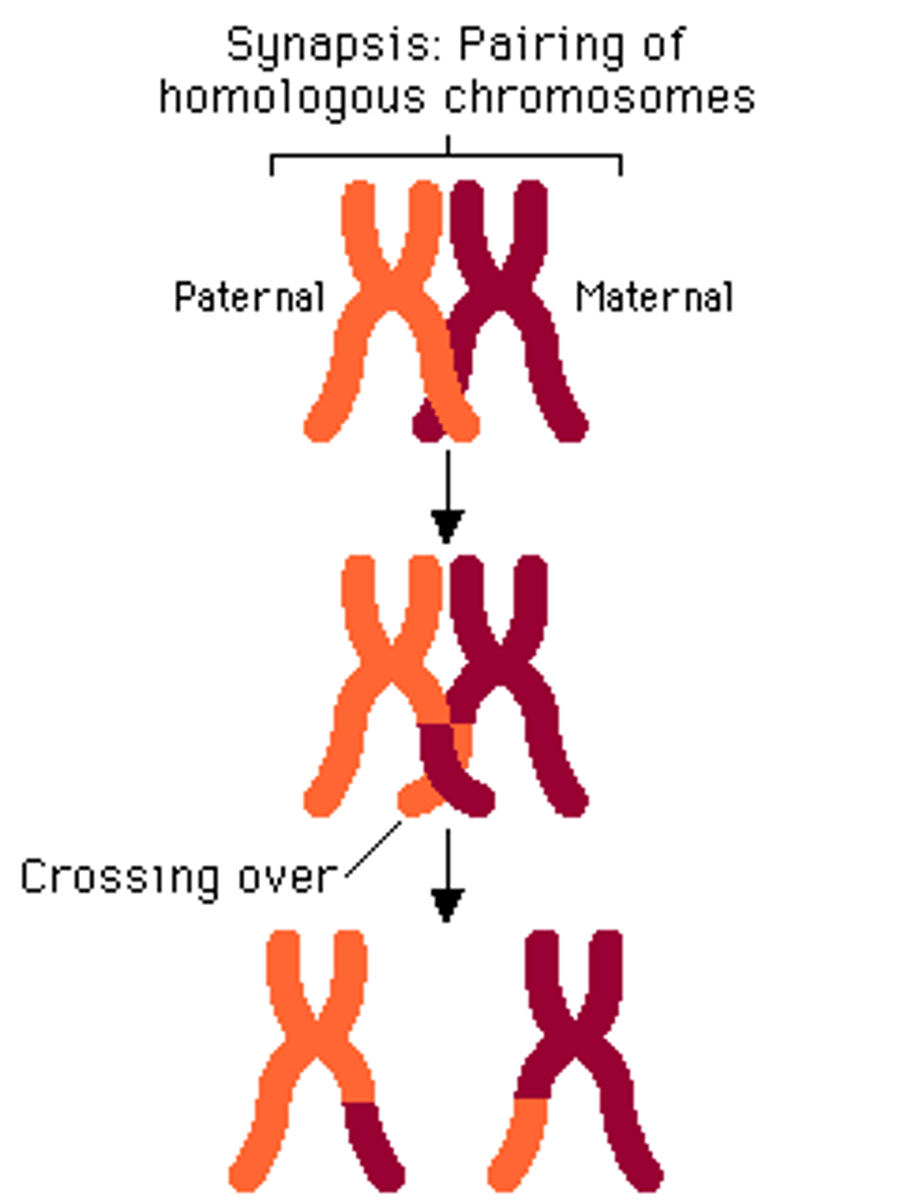
recombination
one chromosome breaks off and attaches to another chromosome during reproductive cell division
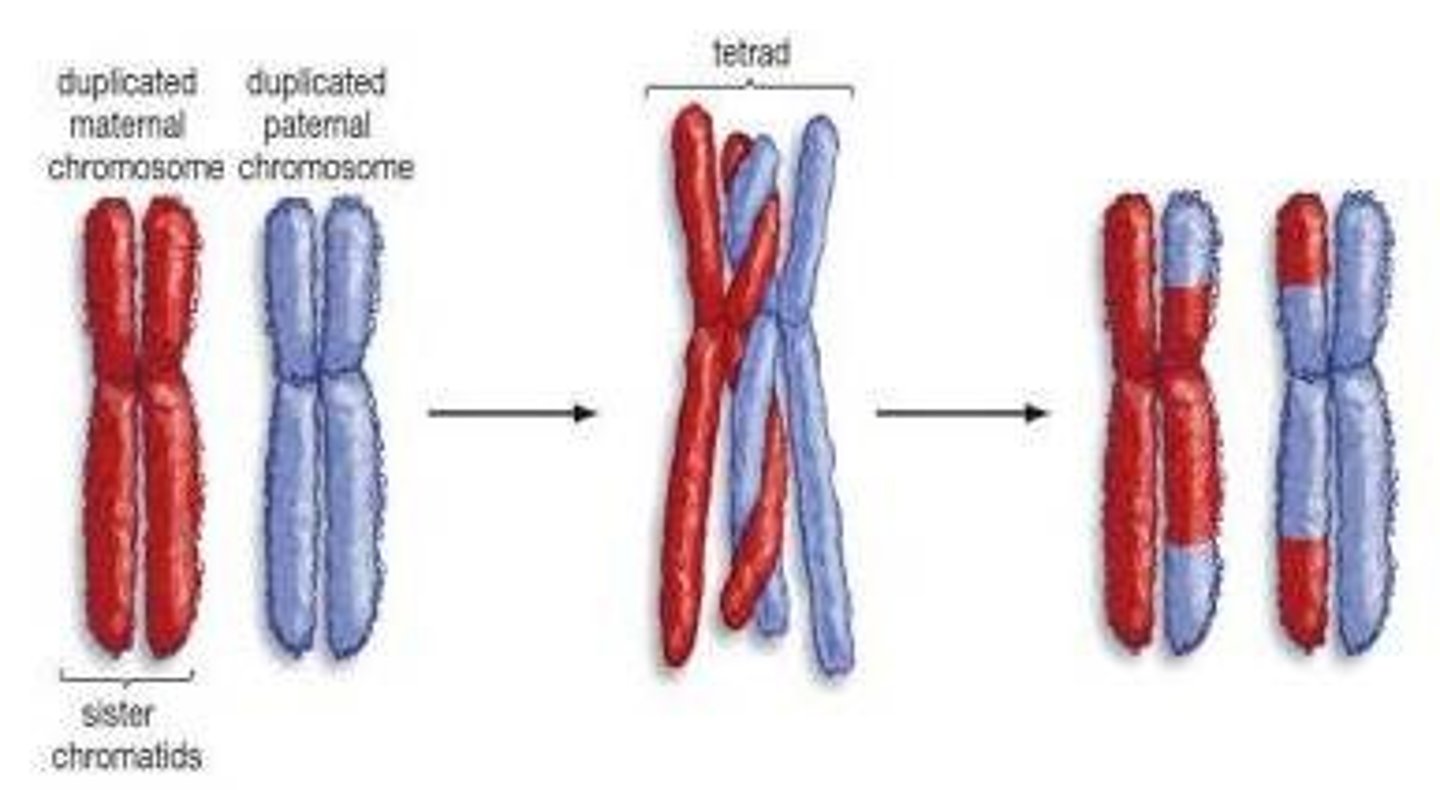
how many genetically distinct gametes can be produced by an individual with 1 chromosome that contains 2 linked genes, where maternal and paternal chromosomes carry a different allele for each of these 2 genes, assuming that crossing-over does NOT take place?
2
(if you have two linked genes and crossing-over doesn't take place, the alleles of these two genes cannot be reshuffled, so you're just stuck with two combinations with the two parental genes)